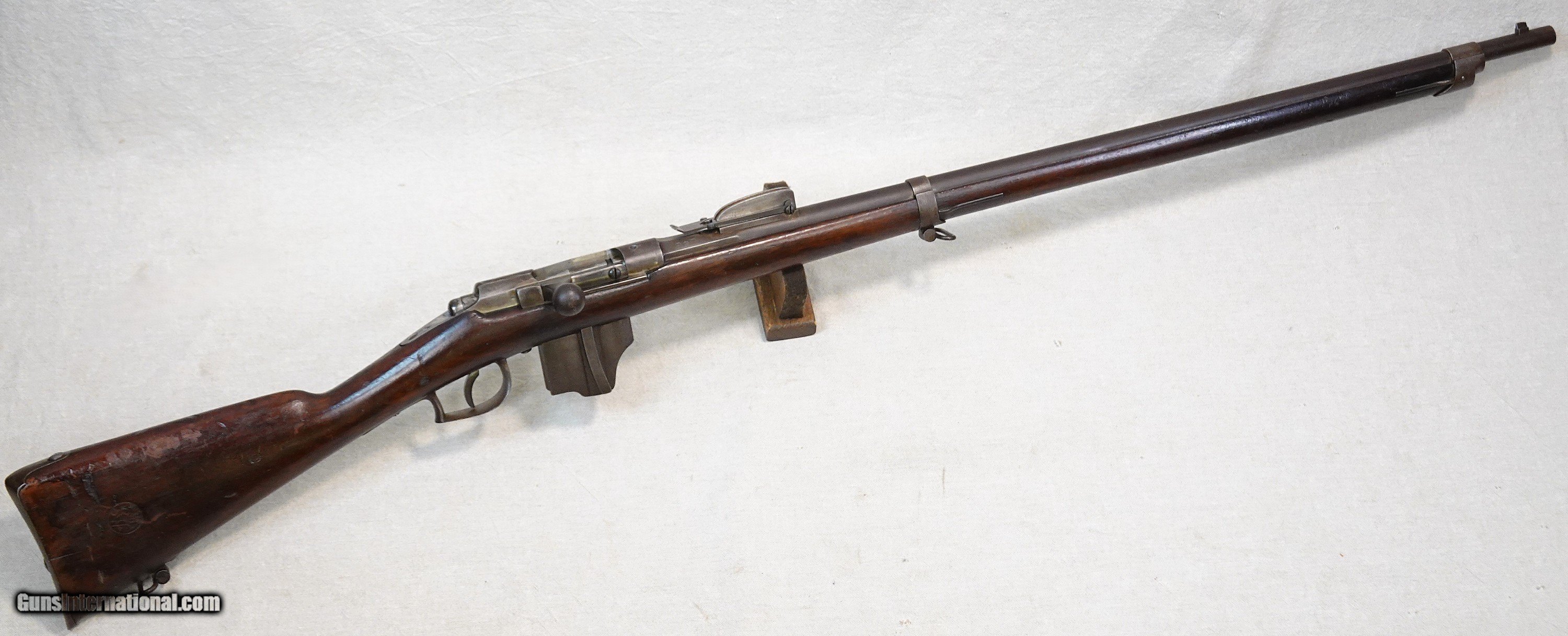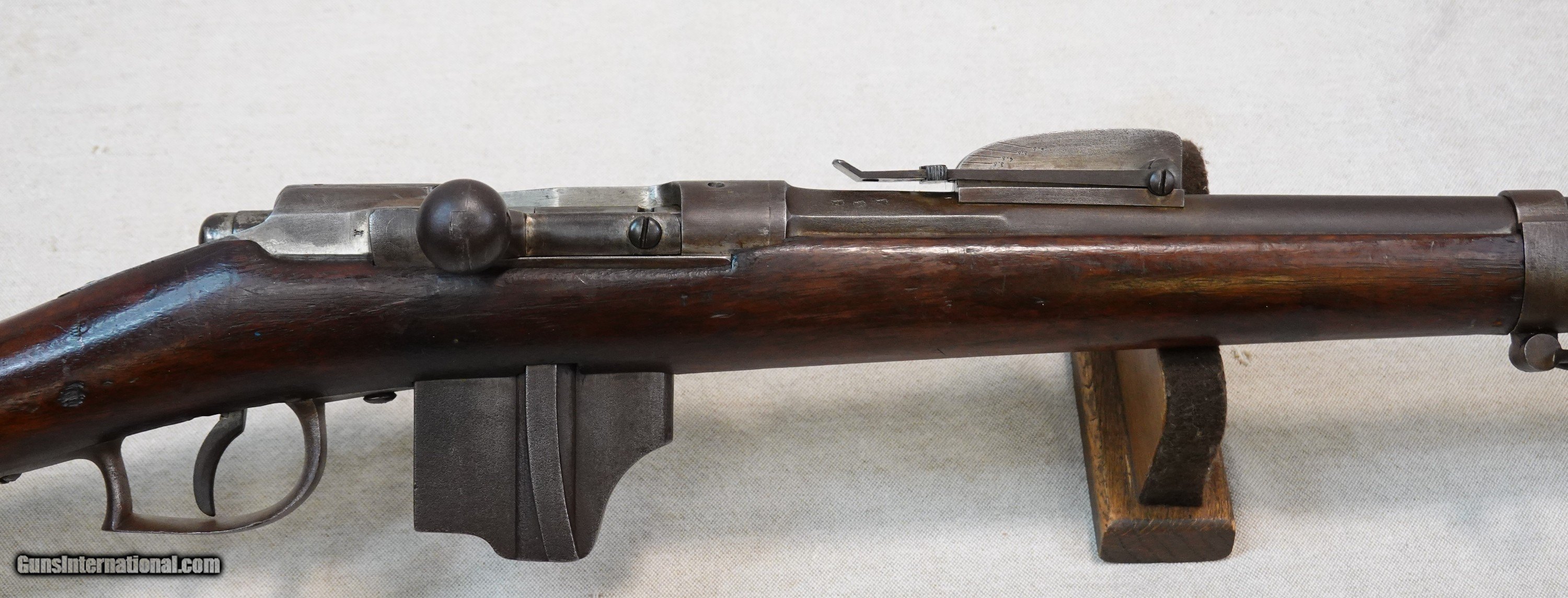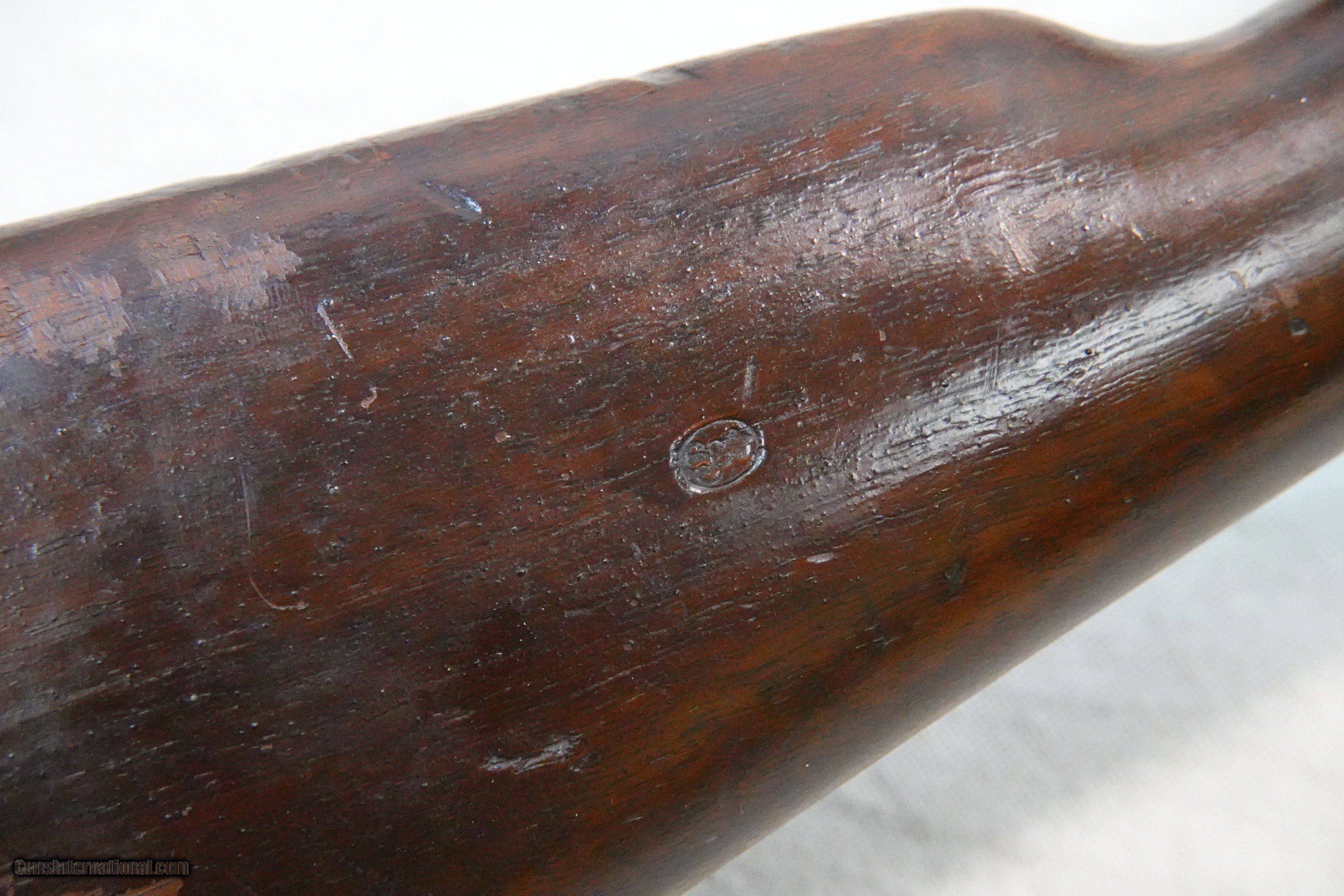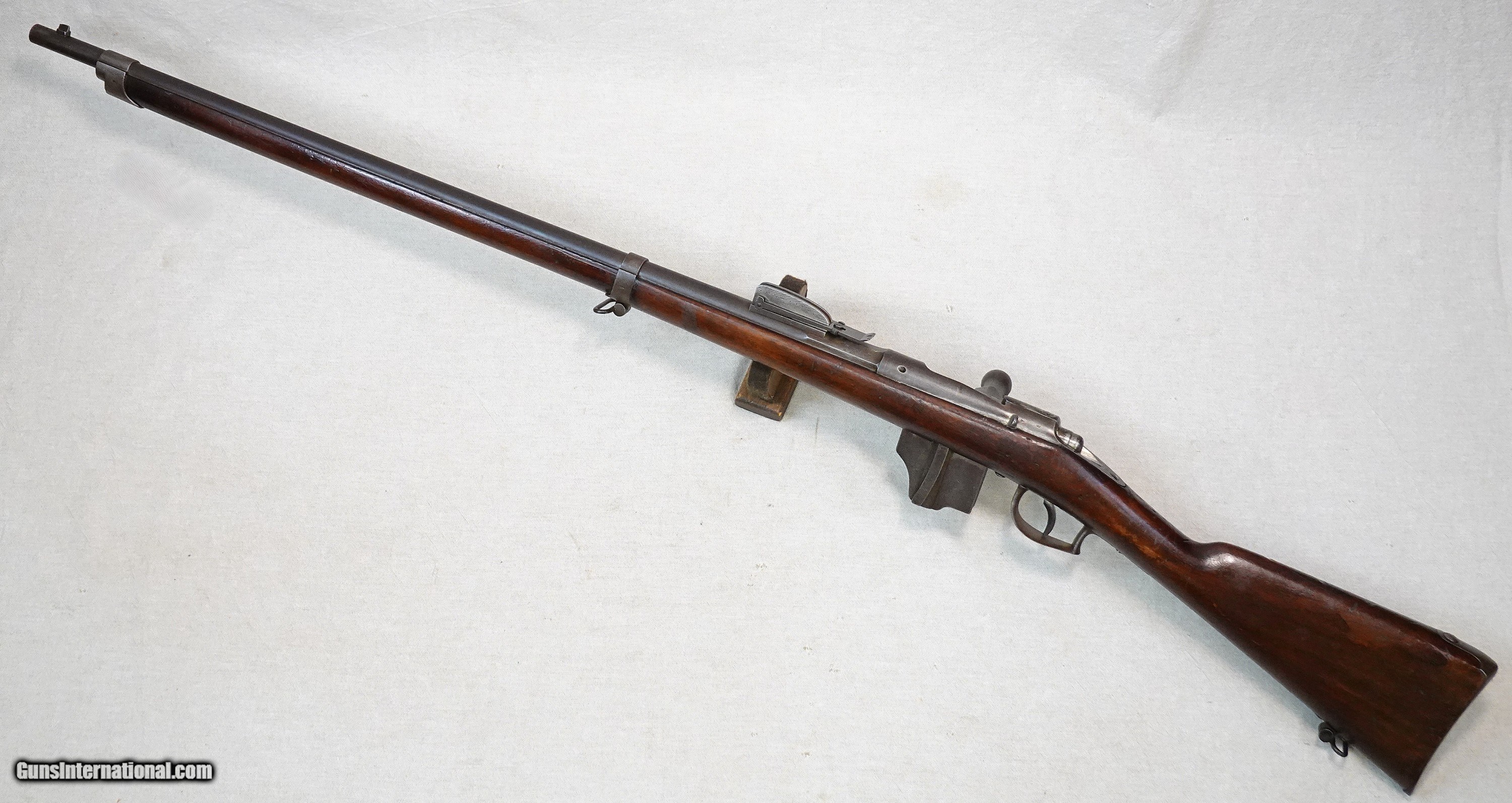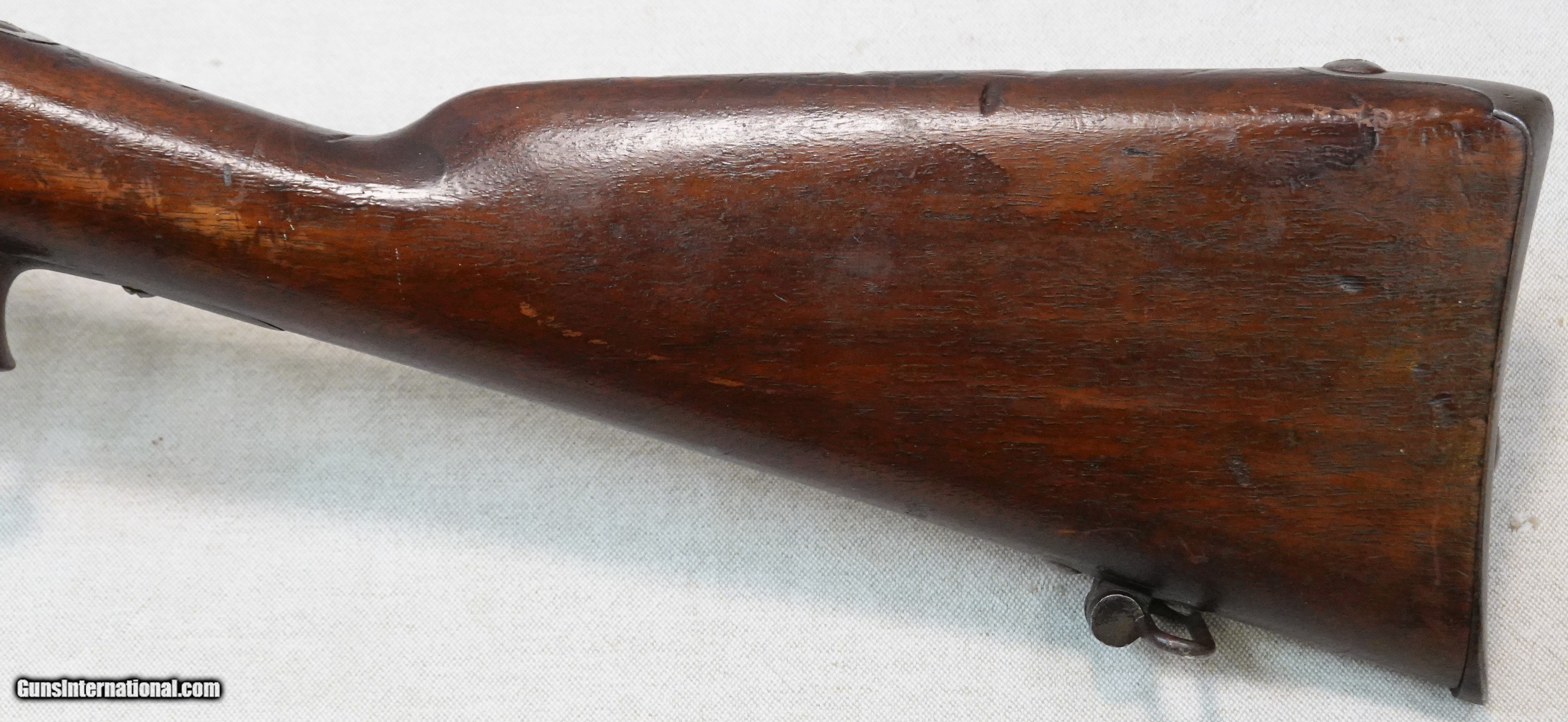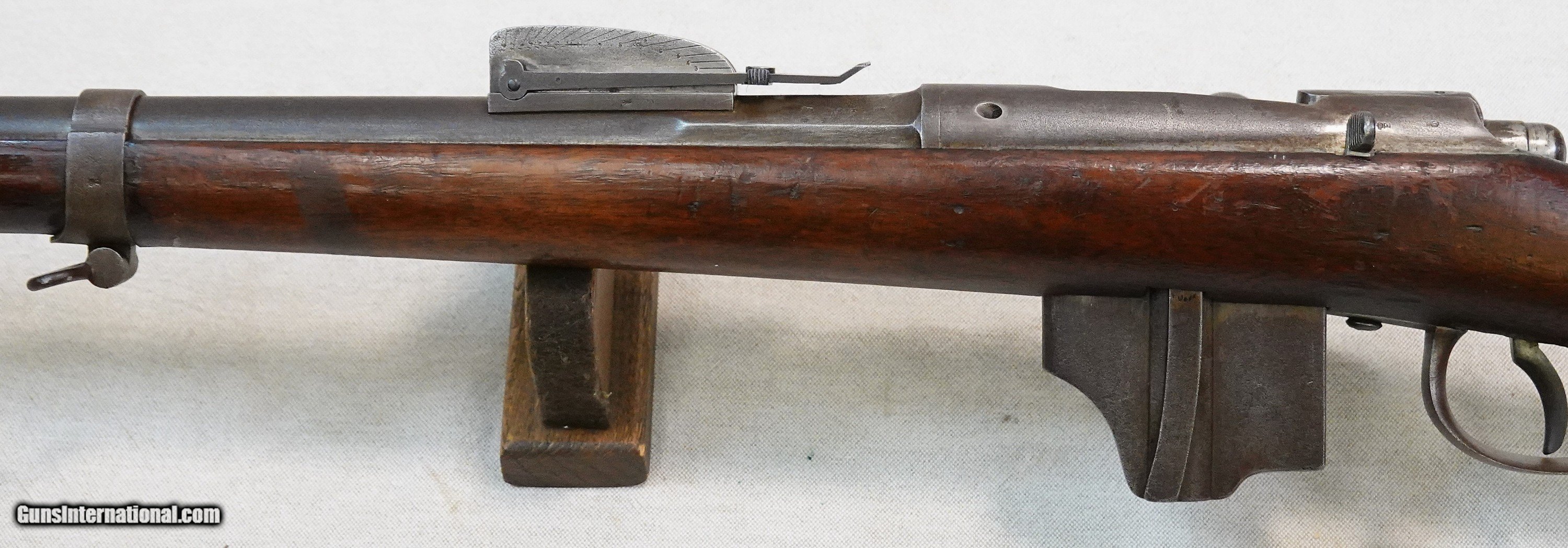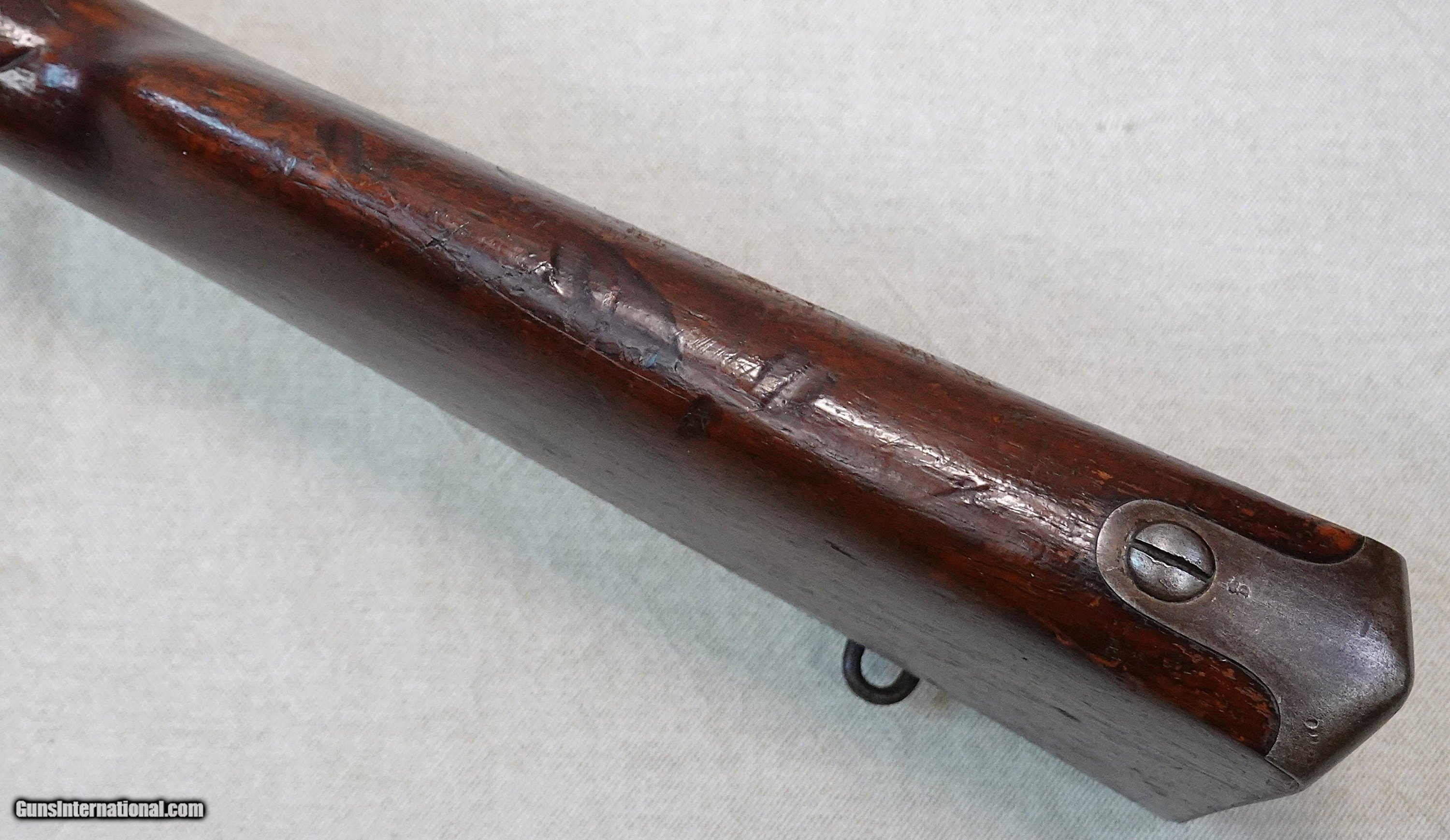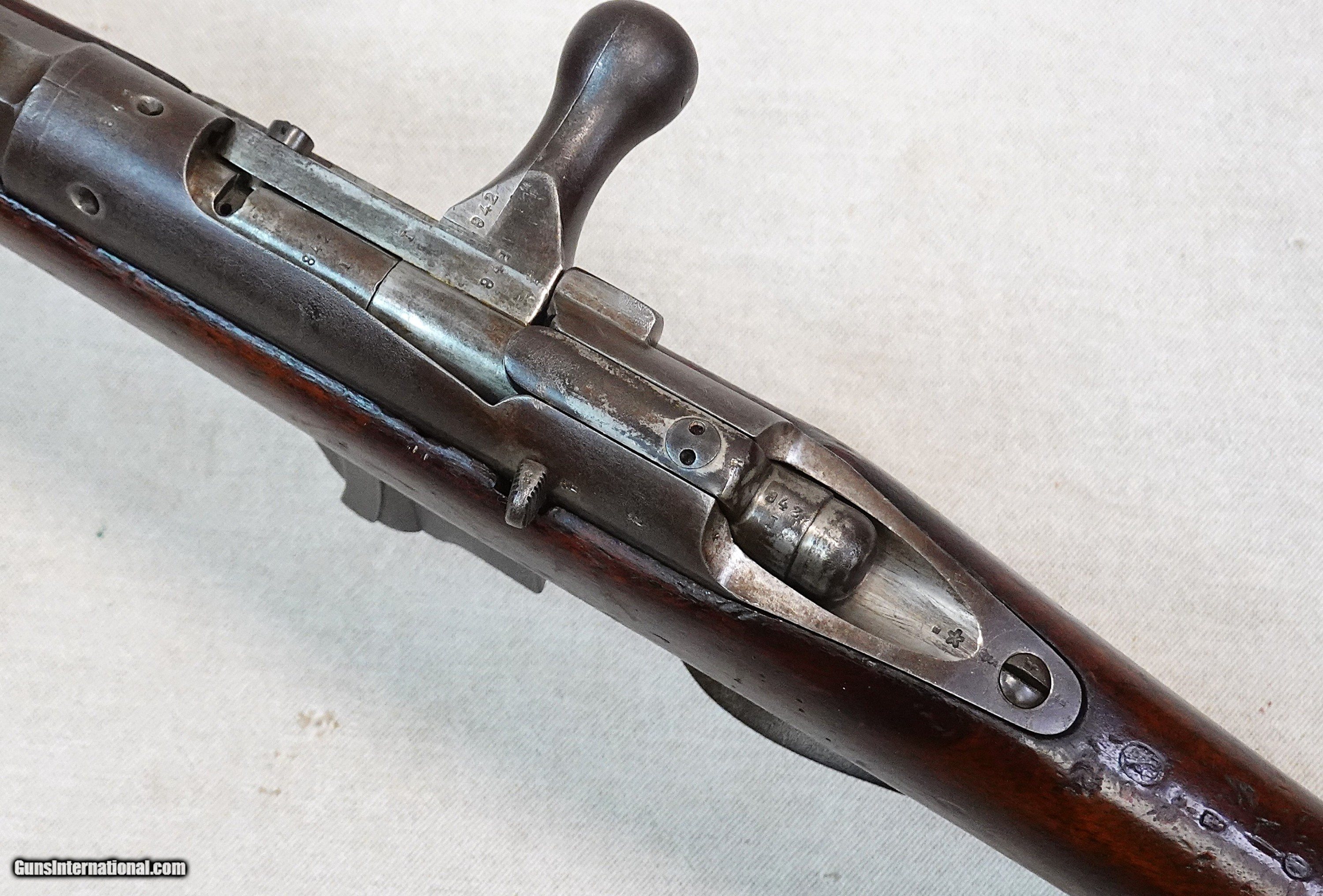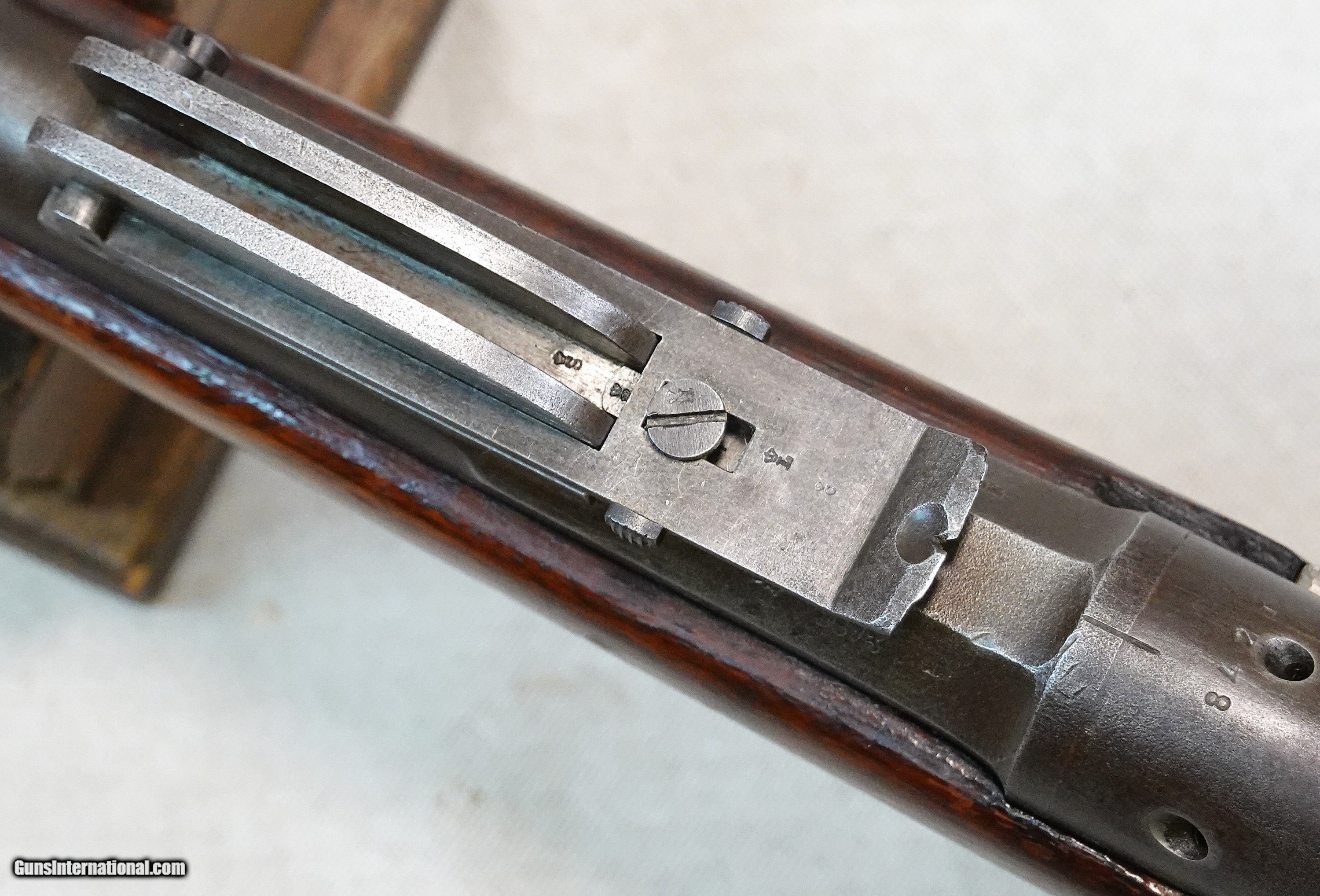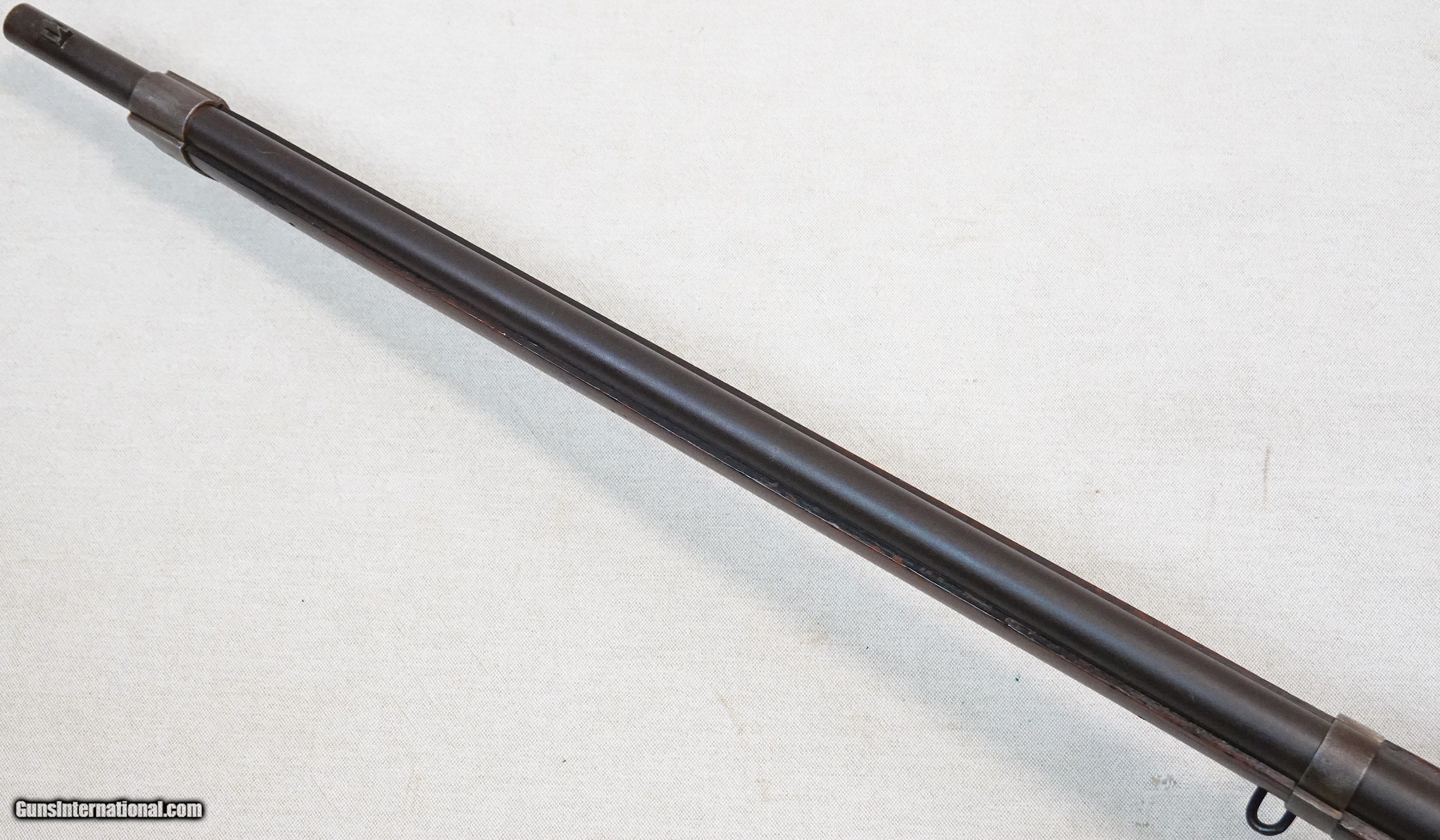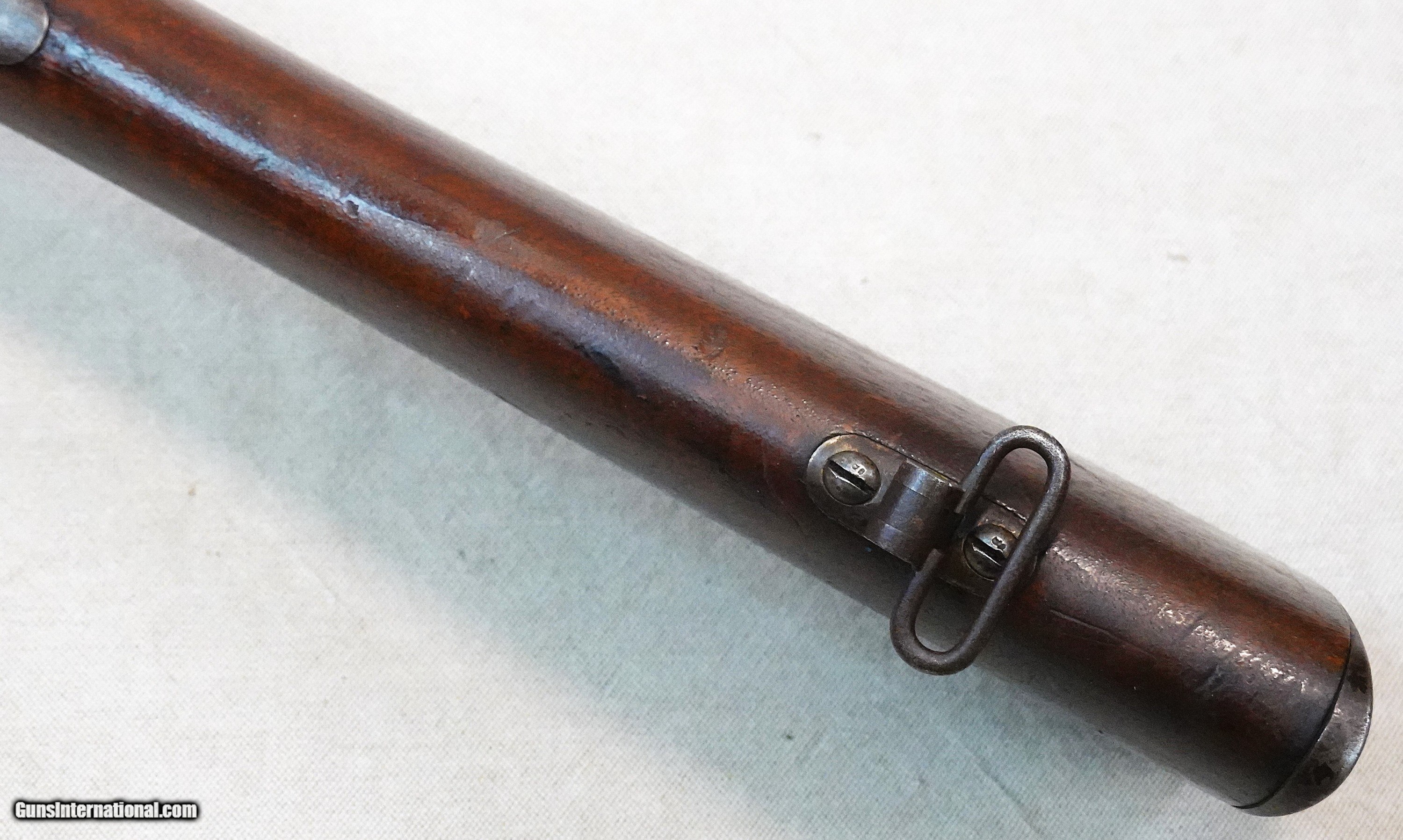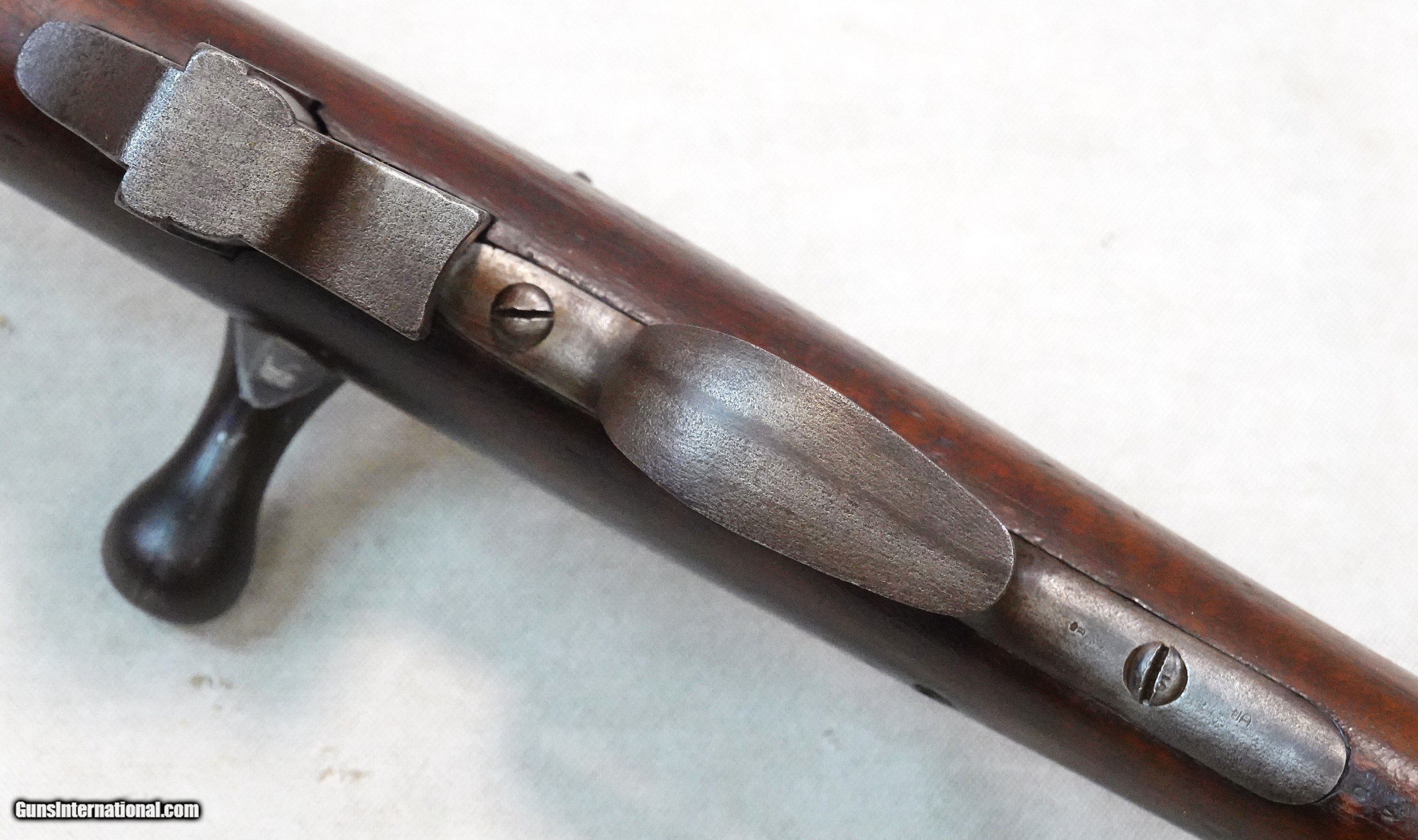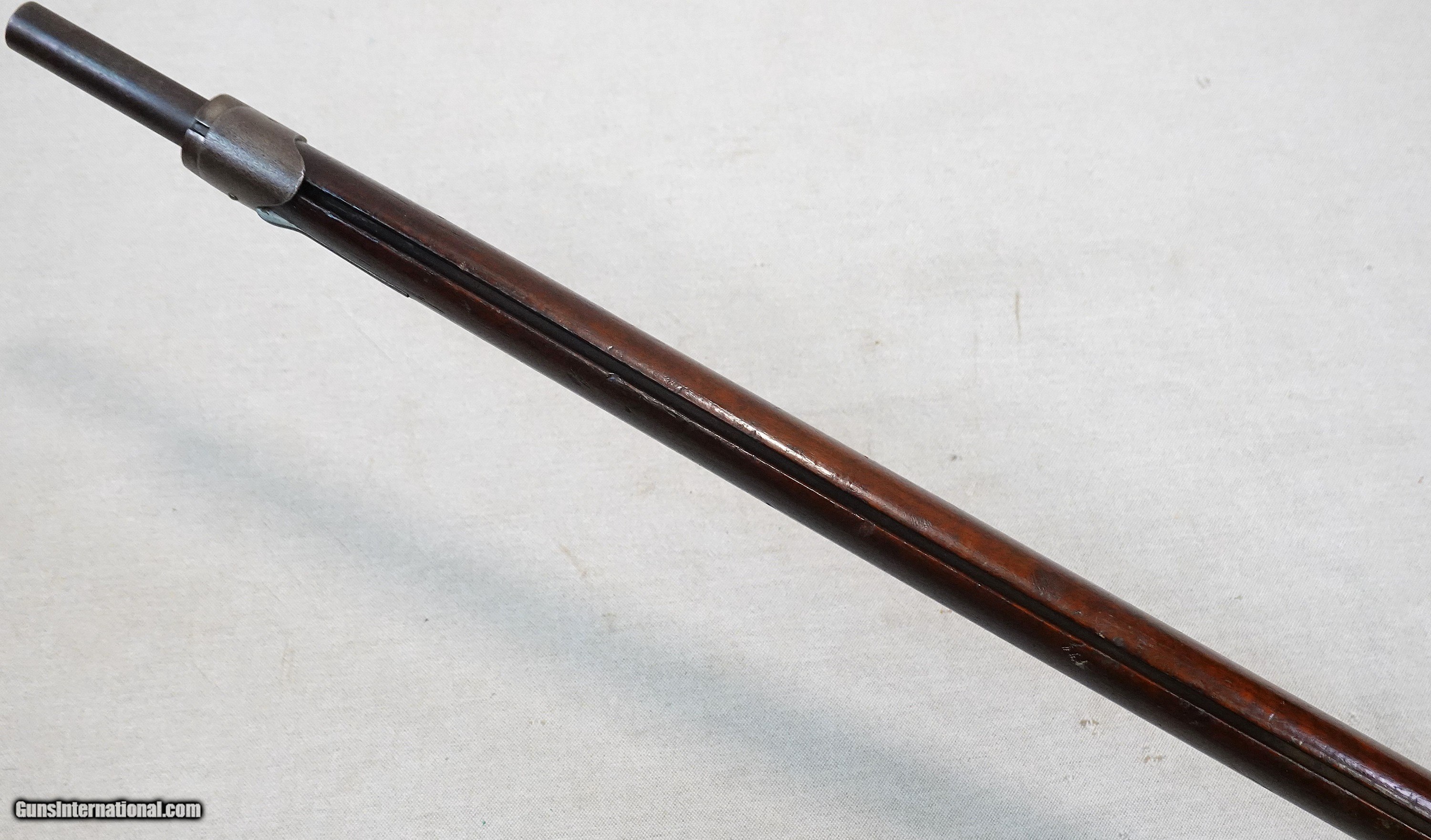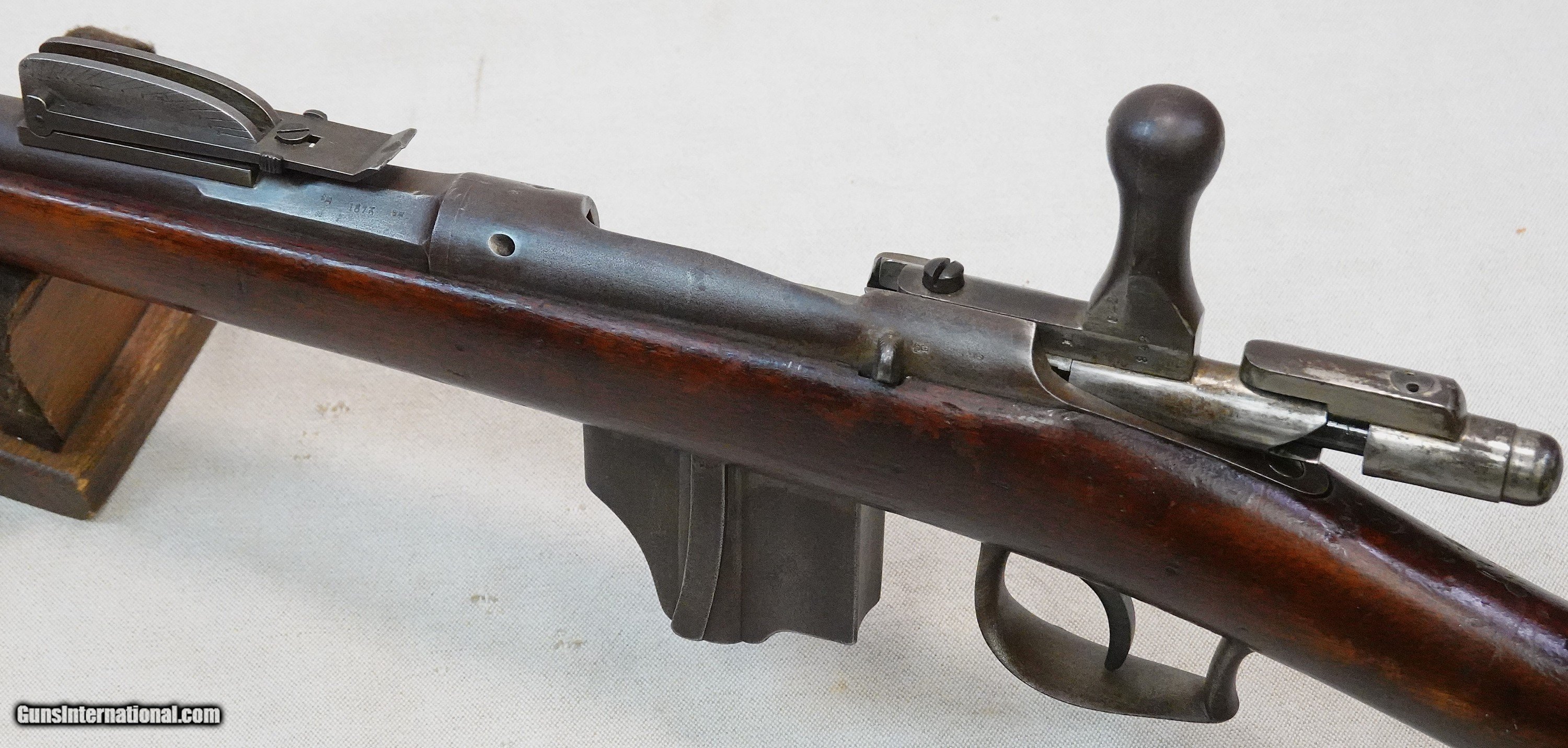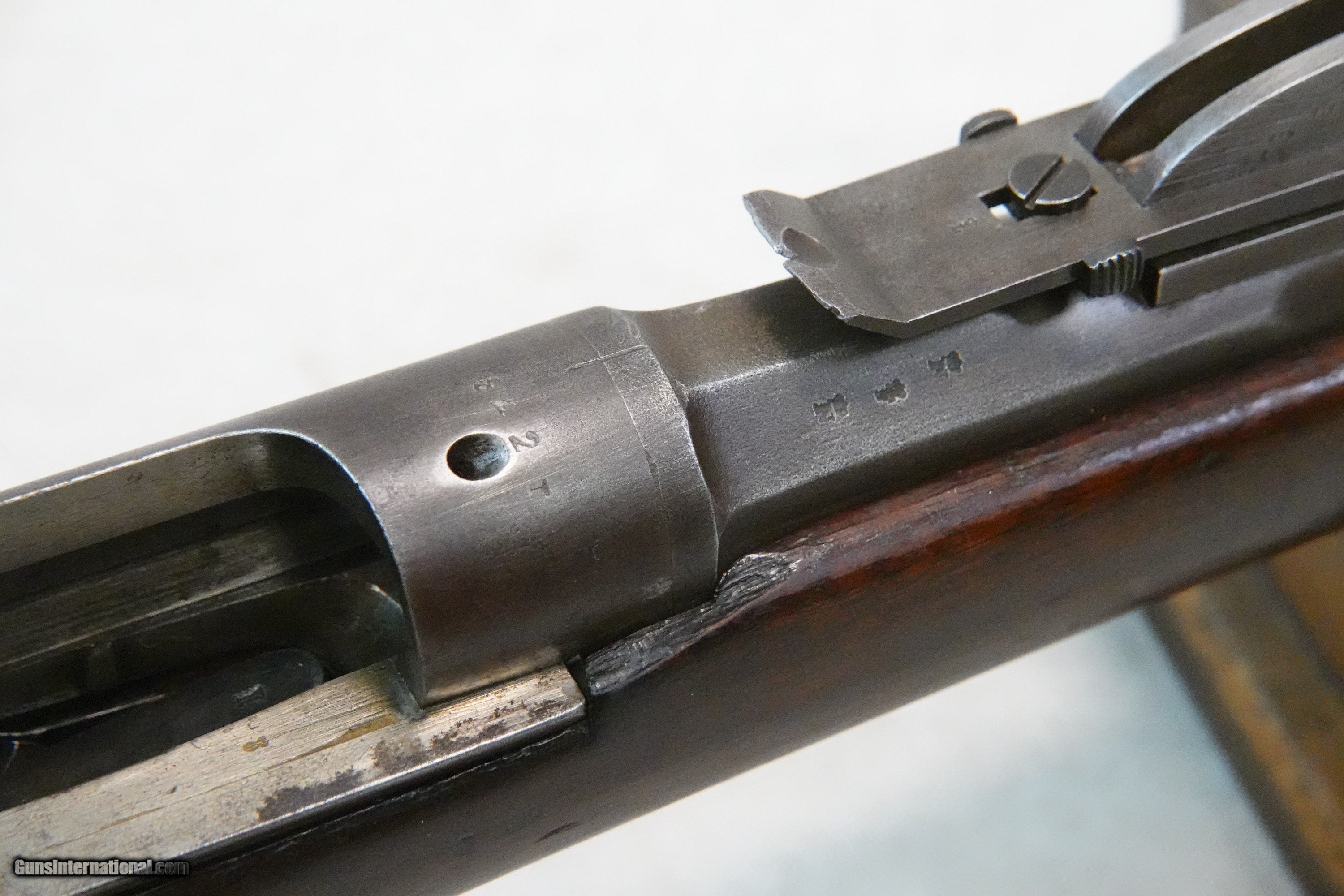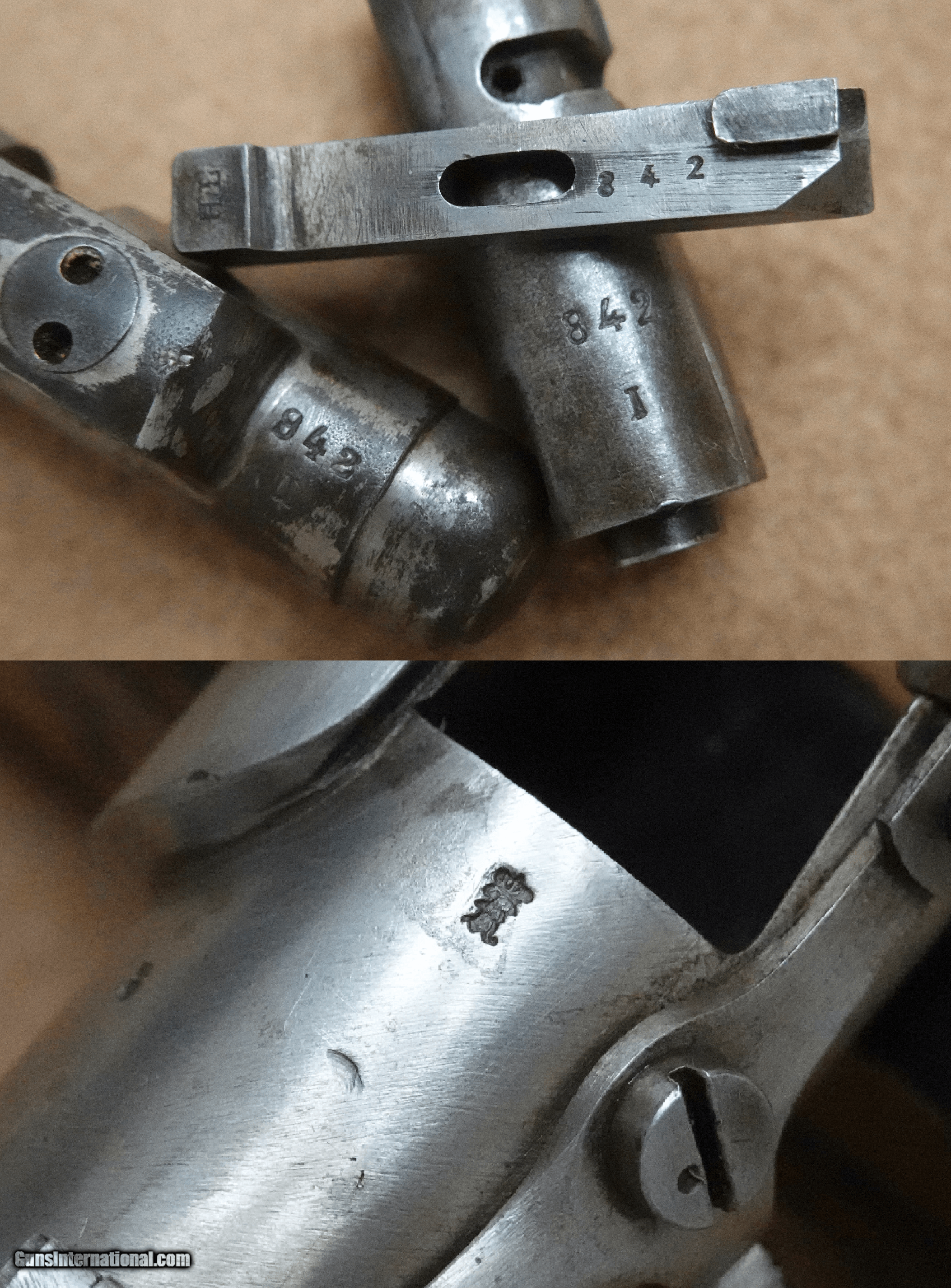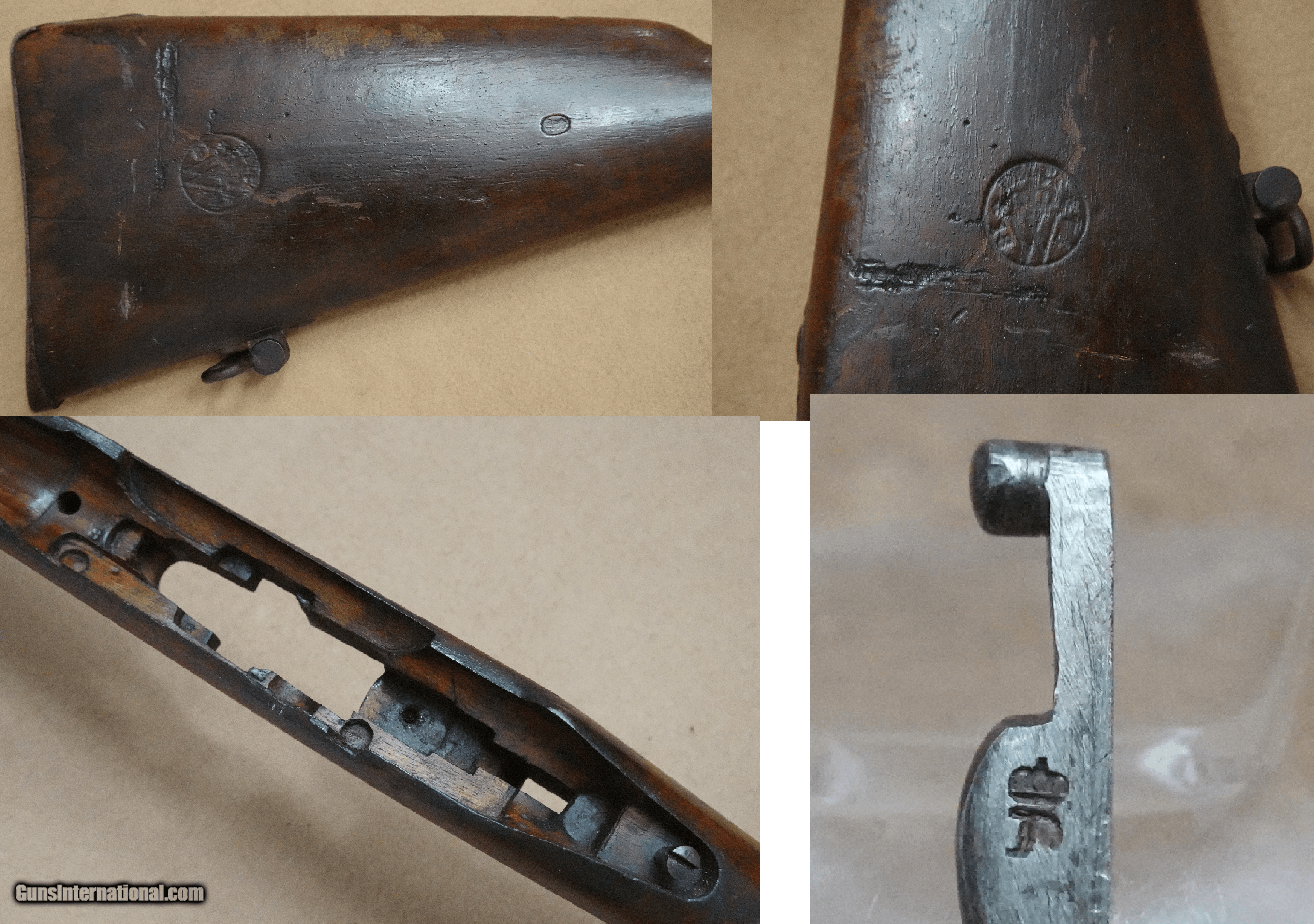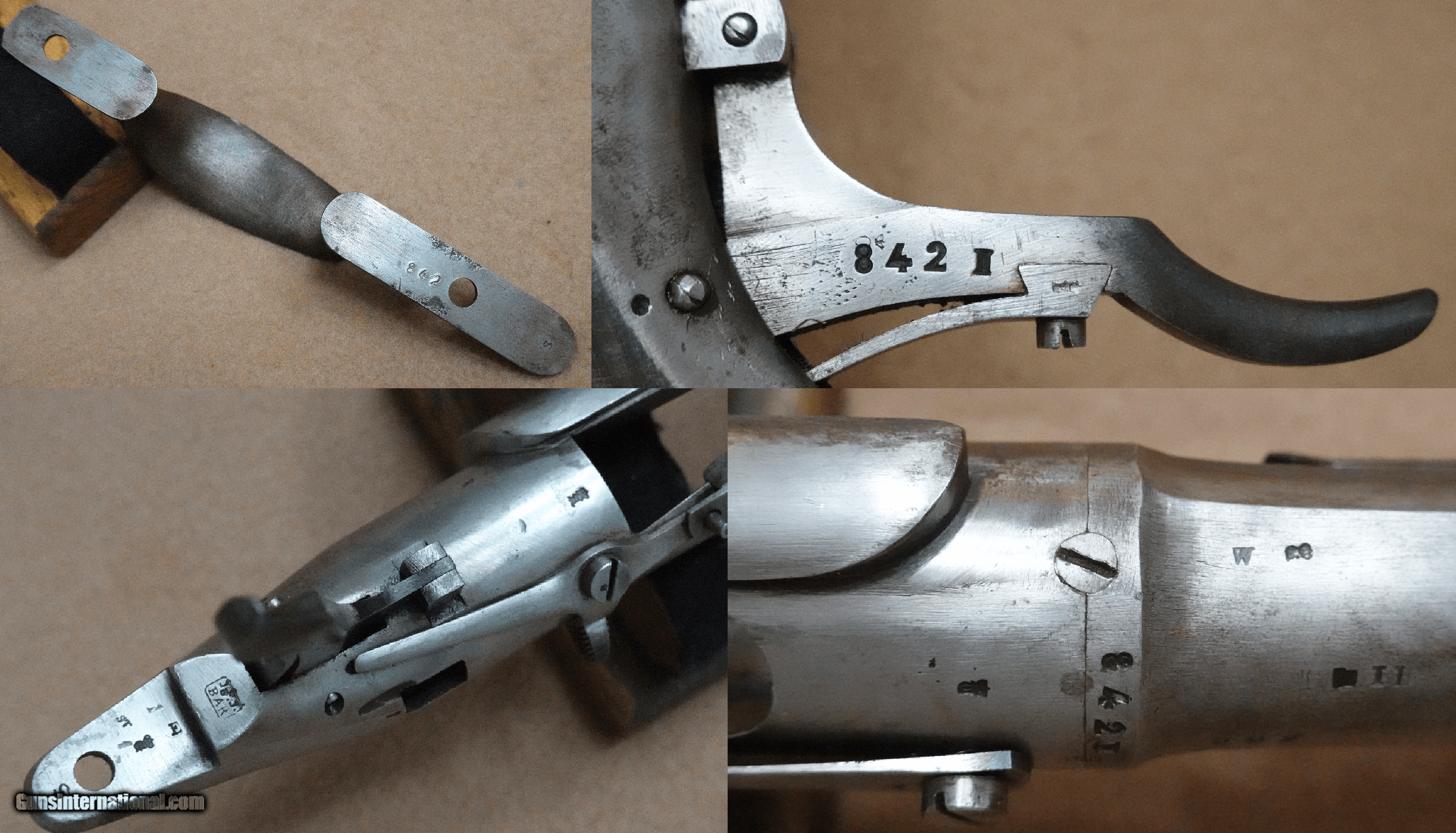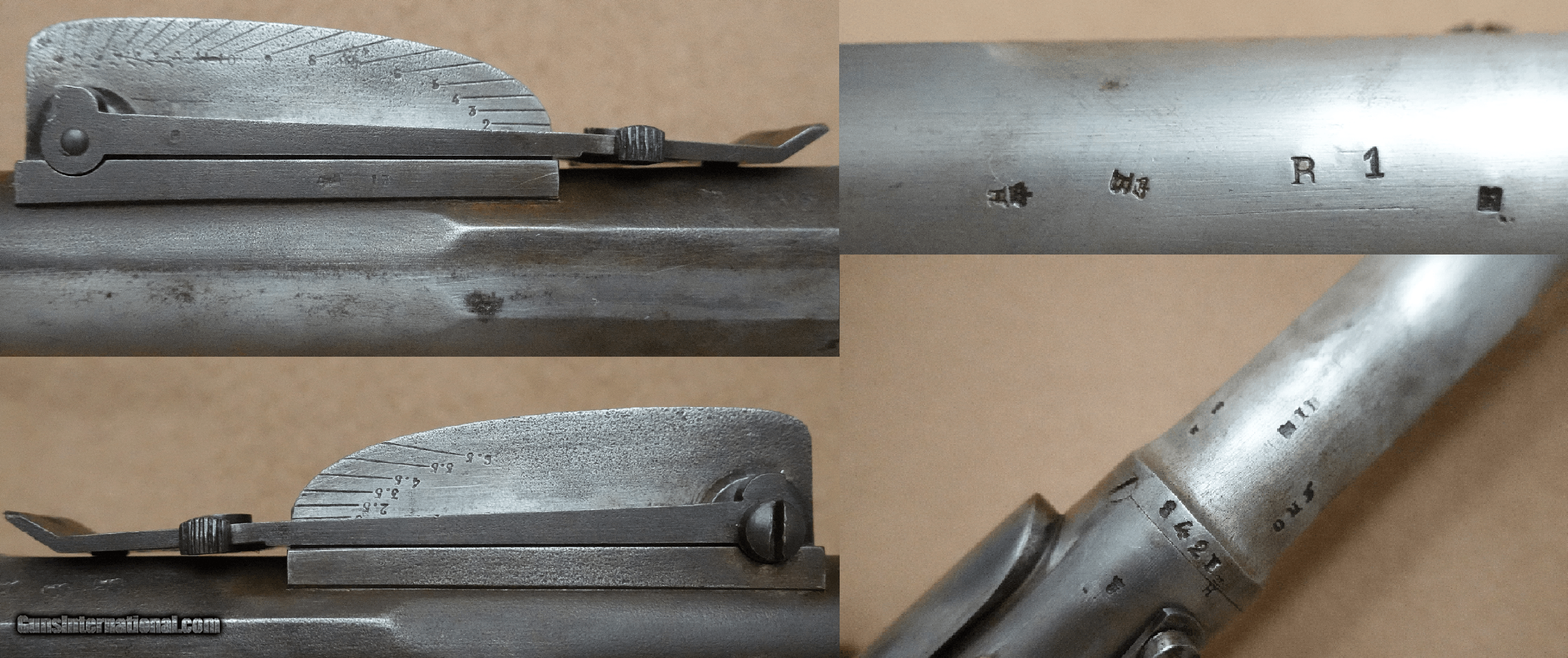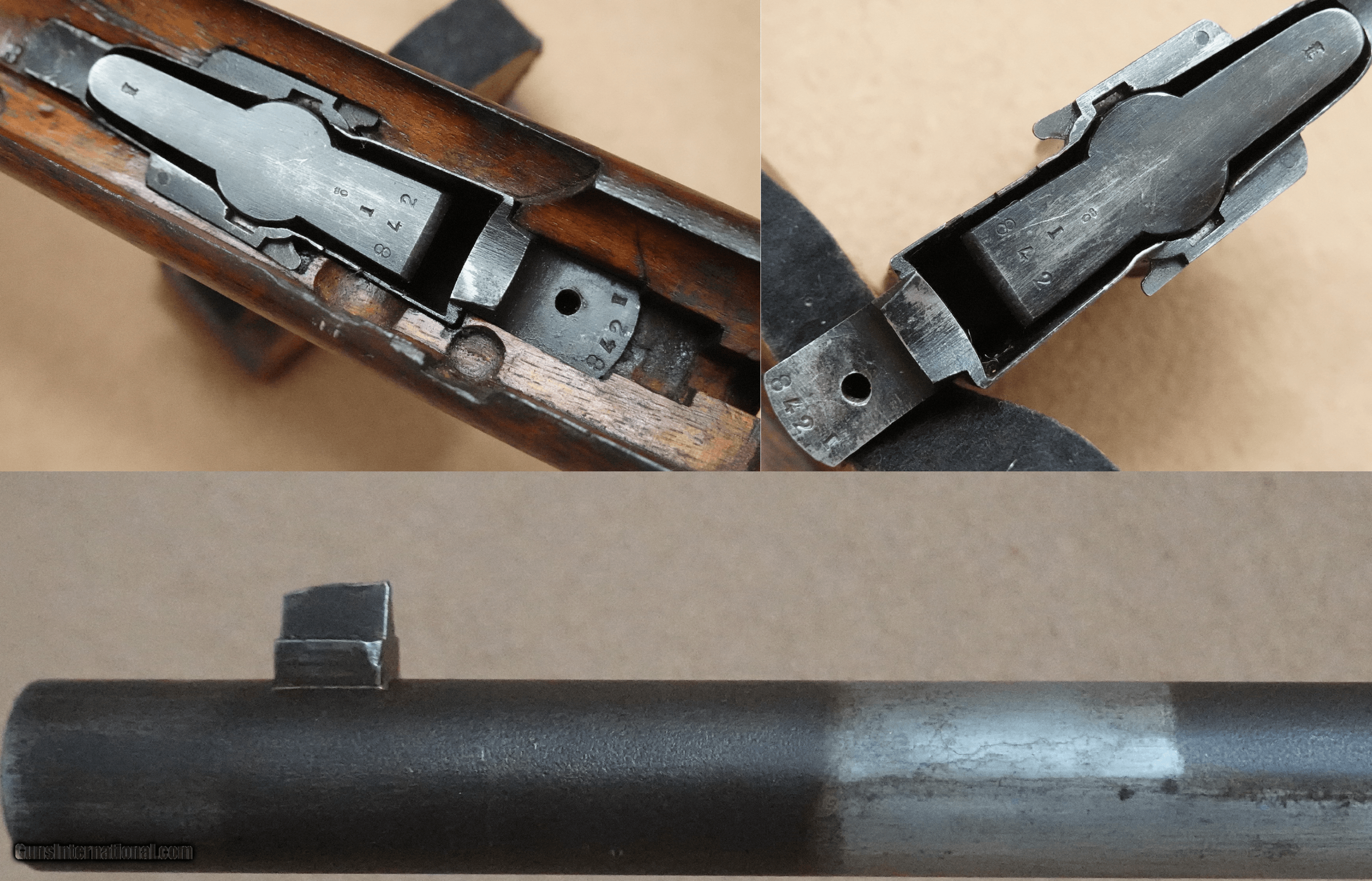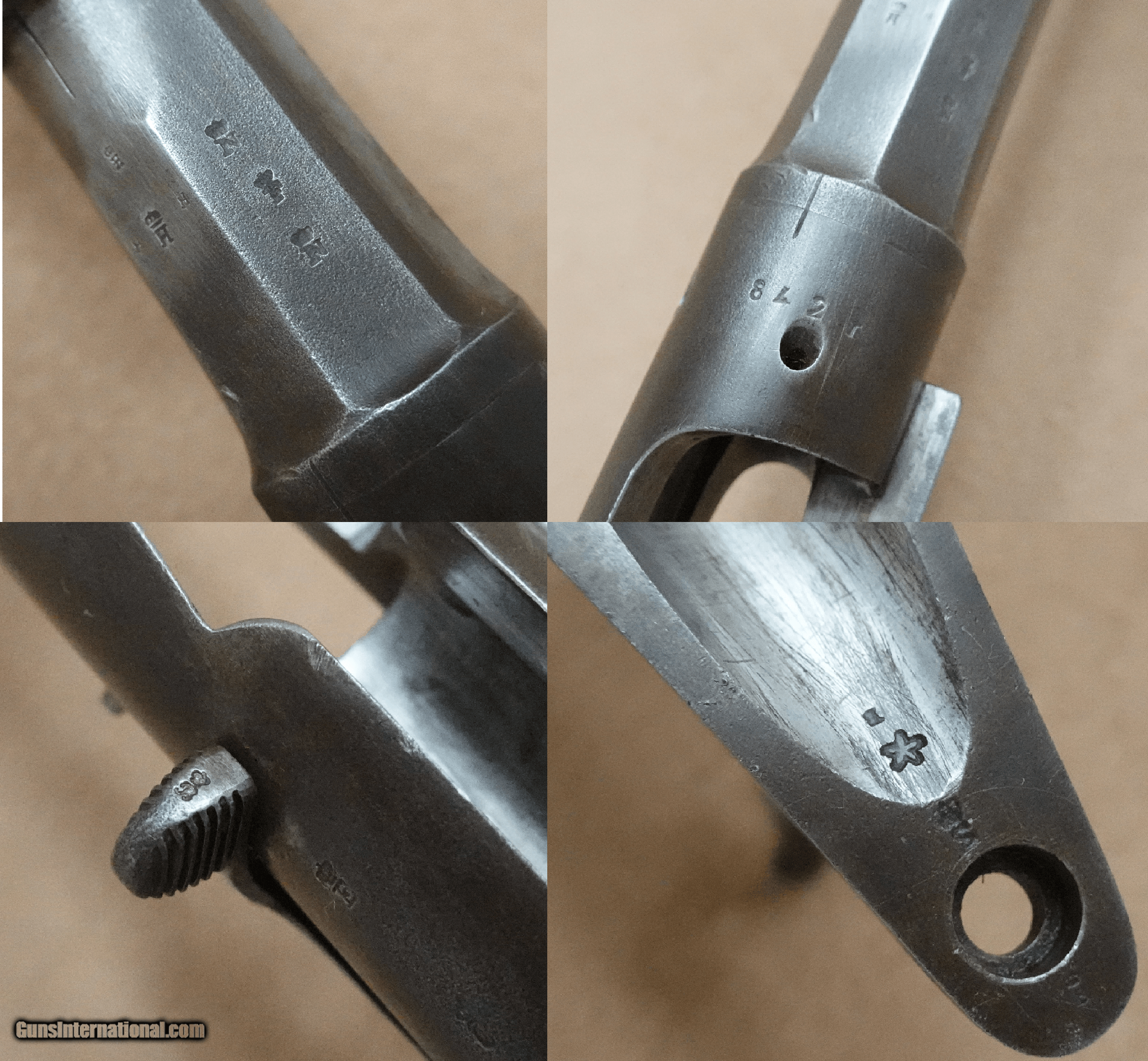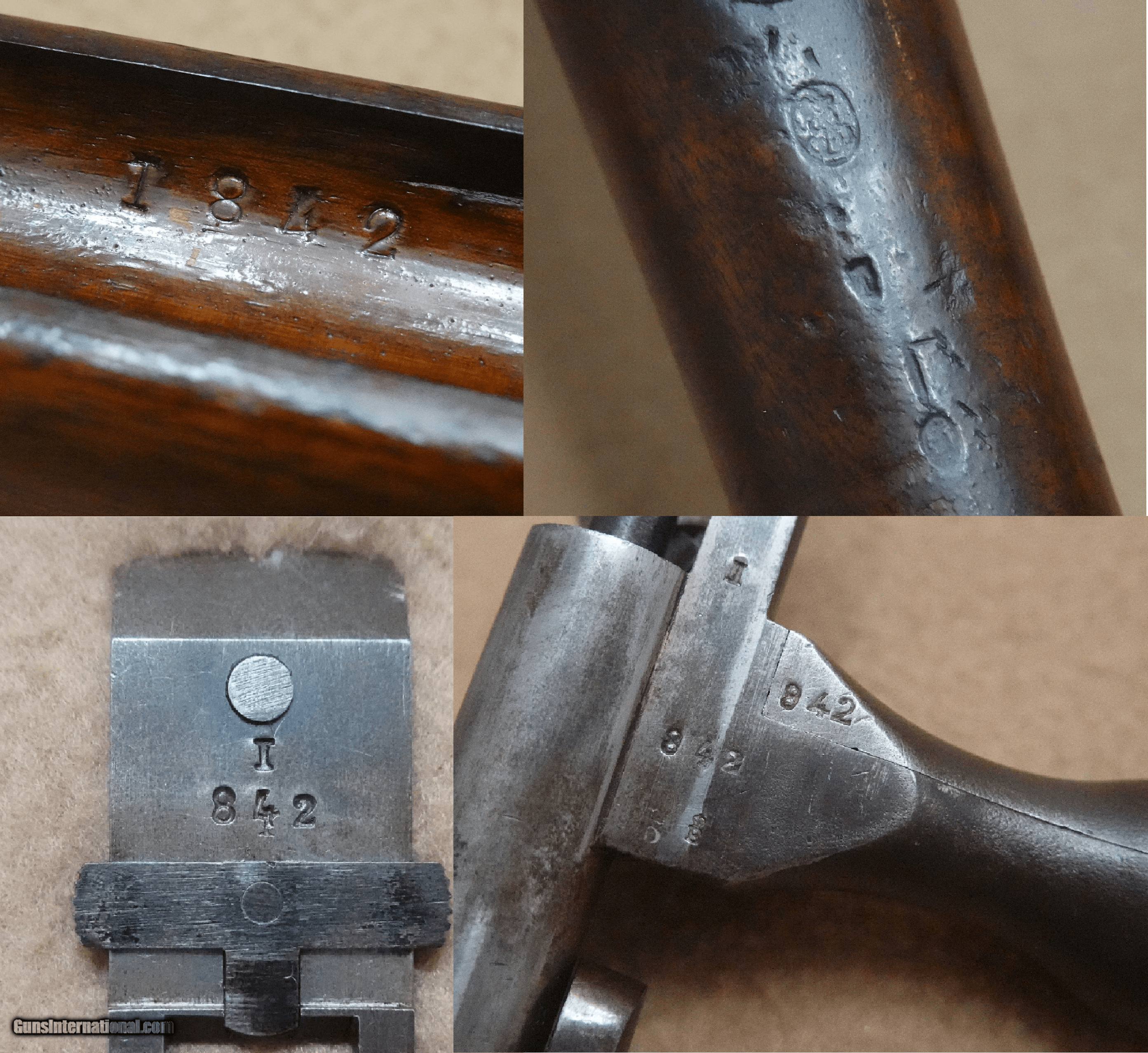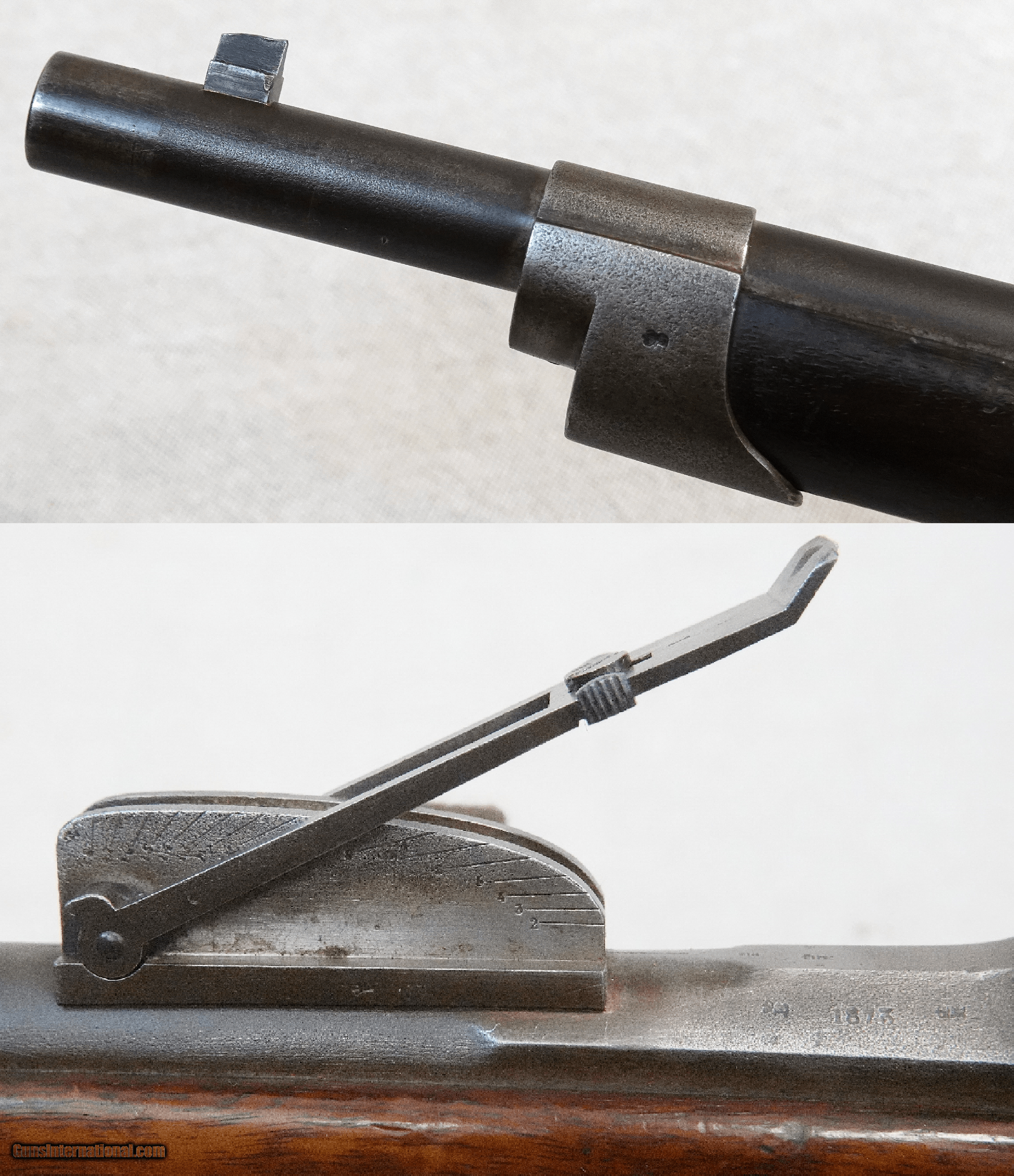Your Session is Ending
 The server has not detected any activity for the last 3 hours.
For your security, your session will expire in 2 minutes and you will be redirected to the Sign In page.
Would you like to stay signed in?
The server has not detected any activity for the last 3 hours.
For your security, your session will expire in 2 minutes and you will be redirected to the Sign In page.
Would you like to stay signed in?
1873 Dated Delft Mfg. Dutch Army Model 1871/88 Beaumont-Vitali in 11.35x51mmR Caliber * Fully-Converted M1871/79/88 *
1873 Dated Delft Mfg. Dutch Army Model 1871/88 Beaumont-Vitali in 11.35x51mmR Caliber * Fully-Converted M1871/79/88 *
Guns International #: 102800944
Seller's Inventory #: BP21-91
Category - Military Rifles - Non-US
- Military Rifles - Antique
Seller's Information
When emailing or calling sellers direct,
please mention that you saw their listing on GunsInternational.com
Seller: Antique & Modern Firearms, Inc.
Company: Antique & Modern Firearms, Inc.
Company: Antique & Modern Firearms, Inc.
Member Since: 4/27/15
State:
Kentucky
Zip: 40503
Country: United States
Phone:
(859) 276-1419
Fax:
(859) 278-0838
Active Listings: 0
Total Listings: 16038
Seller Type: FFL Dealer
Return Policy: 3 day inspection and return policy on used guns and accessories.
Payment Methods: Visa,Master Card, Discover,Check
1873 Dated Delft Mfg. Dutch Army Model 1871/88 Beaumont-Vitali in 11.35x51mmR Caliber
* Fully-Converted M1871/79/88 *
Description:
This is a really handsome, all-original, all-matching, totally-honest and unmolested, Dutch Army Model 1871/88 or M1871/88 Beaumont-Vitali infantry rifle made by the Dutch state-owned DELFT Armory in 1873.. This ANTIQUE infantry rifle was the final modernized version of the Dutch Military's Beaumont Model 1871 rifle fielded, having been thru 2 conversions which modernized it significantly and greatly extended it's service life. While it was tecnically replaced as the MAIN service rifle by the Steyr M.95 in 1895, the M1871/88 Beaumont-Vitali soldiered-on as the main rifle of the Dutch Militias until 1907. At that point they were sent to the Dutch East Indies for service there, and they remained in service there all the way thru World War 2. That equates to an astonishing 74 years of military and militia service for a rifle that was first-designed in 1871 as a single-shot rifle, and which remained chambered for a big, heavy, and slow black-powder cartridge despite the upgrade to a repeater. This was an antiquated longarm that was used on horseback and in mass infantry charges across open ground in primitive military tactics, yet it served thru numerous conflicts and two world-wars in which the participants were fully-modernized and in which the troops were armed with modern weapons ranging from fully-automatic machine pistols with detachable magazines, various light, medium, and heavy machineguns that were both belt-fed or fit with detachable high-capacity box magazines, where the standard-issue infantry rifle was semi-auto and/or bolt-action repeating rifles, many carrying semi-auto pistols or revolvers as sidearms, and armies that were mostly mechanized and supplied with trucks, tanks, self-propelled artillery, and numerous other specialized and general-purpose vehicles, transports, and an assortment of airplanes of all sizes, all powered by combustion or radial engines.
The story of the Beaumont rifle started with the adoption of the single-shot Model 1871 Beaumont bolt-action infantry rifle by the Dutch Military, which was chambered in the black-powder 11.35x51mm rimmed cartridge in 1871. They were manufactured in two different placesthe state-ownes Delft Armory, and the P. Stevens Maastricht firm. Both robust and reliable, the M1871 Beaumont served the Dutch Military in it's original configuration for 8 years, until 1879. At that point, the Beaumont went first thru it's first modernization/conversion to M1871/79 specs. The M1871/79 modifications consisted of drilling 2 gas escape holes/vents into the receiver's front barrel ring to safely disperse gases from ruptured primers away from the shooter, as well as replacing the rear sight with a much-improved design that was capable of better accuracy yet more robust and durable, easier to adjust in severe weather and in often rapidly-changing battlefield conditions, and had a much larger range of elevation adjustment, now adjustable from 100 meters all the way out to 1800 meters. This better-matched the military's standard-issue 11.35x51mmR cartridge balistics, extended it's effective range, and generally helped improved accuracy at all ranges. The second, and much more significant revision/upgrade, occurred in 1888. Despite the fact that this rifle was already considered obsolete at this point in time, when military rifles designed to use "small bore" smokeless powder cartridges were being adopted by countries all over the world, the Dutch Army's top brass decided to save money and time by converting the single-shot M1871 and M1871/79 Beaumont rifles already in inventory into a bolt-action repeater, by using 4-round box magazine conversion designed by Major Giuseppe Vitali of Italy. The rifle's black powder-powered chambering in 11.35x52mmR would remain the same, despite it being obsolete as much or more-so than the rifle, in an effort to save cost and time anywhere they possibly could, as well as to take advantge of the huge surpus of this ammo already in the Anry's inventory. This 2nd conversion began in 1888, which was already two years AFTER the appearance of the M1886 French Lebel (the first smokeless powder, small bore, cartridge infantry rifles). Thid conversion was ordered to be completed on ALL of the regular Dutch Army's rifles, except for a few in-service in the Dutch East Indies and with the Home Guard. The Dutch Navy decided not to take part, choosing to remained armed with the single-shot Beaumont models they had on-board their ships and at their bases/docks.
To convert the Dutch Army's Beaumont M1871/79s into repeaters, the stock was first modified by cutting-out the wood required on the underside of the stock to fit the Vitali-designed magazine assembly. This non-removable box magazine was mounted against a cut-out made in the lower receiver to secure it. Next, the extractor was moved to the right side of the non-rotating bolt head, and the matching channels in the left side of the receiver and on the left side of the bolt head were used for clearing a newly-fit floating ejector. The ejector was designed to force the spent case to pivot against the extractor during the very last bit of bolt travel, which powers the ejection of the case out of the receiver to the right side. The left side of the stock was cut out just to the left of the receiver for a magazine cut-off lever, which was fit to the outside of the left side of the receiver, just behind the bolt opening. This magazine cut-off lever actuates a spring-loaded tang in the left receiver-wall, just below the extractor channel. Pushing this lever forward actuates that tang into pressing downward on the top cartridge, which locks the remaining cartridges in the magazine below the bolt, which can now travel thru the full range of motion totally unimpeded. This makes it possible for the soldier to load one cartridge at a time, by dropping it into the receiver with the bolt rearward, cycling the bolt forward guides that cartridge into the chamber while locking onto the rim and is ready to fire, while keeping a full magazine in-reserve for repelling massed attacks or rapid offensive actions. The M1871/88 Beaumont-Vitali did NOT have any type of safety. These modernizations/modifications were just adequate-enough to prevent the Dutch Arny from being at a huge disadvantage against enemy forces armed with bolt-action repeaters chambered in the more modern, powerful, and high-velocity smokeless cartridges.
This particular M1871/88, serial number "842 I" is in very good condition overall, all-original, and all of the serial-numbered parts are matching. It is complete in every respect exceptfor the cleaning rod and sling. It was obviously issued and used by the Dutch Army, but has been well-cared for to remain in it's current good condition. While the exterior of the rilfe shows wear to the metal, handling marks in the metal and wood, and a consistent patina to the steel from exposure and light surface rust long-removed, the mechanics and internals of the rifle are in excellent condition, and the rifle is 100% functional, just like the day it left the armory after the last conversion to M1871/88 specs. The original armory bright and blue factory/armory finishes are still intact, however the armory bright bare steel has darkened from field use, exposure, and storage to a gray/brown tint. The factory blued parts including the magazine assembly and some various small parts in the bolt assembly and elsewhere has also worn to a gray/brown blue color, thru both mechanical wear from carrying and firing it, as well as deterioration from just being exposed to the air and humidity for 151 years, as well as a wide range of weather while it was still afield in military service. As you can see from the pictures provided, despite it's old age, and likely extended service-life with the Dutch military, militia, and colonial forces, this Beaumont-Vitali M1871/88 is STILL a handsome rifle. The uniformity of the patina on the metal parts combined with the matching condition of the stock is attractive, and there are no eyesores that detract from its look like replacement parts or repairs that do not match the rest of the rifle in condition or color. The action is still slick and smooth with no excessive play or slop anywhere, all of the controls work perfectly, the stock is still solid with no cracks or missing chunks of wood, all of the factory and military-applied markings and inspection proofs are still both intact and fully legible, and rifle is still nice and tight overall with no rattling, broken, or loose parts. The bore of this Beaumont-Vitali is in good condition overall, slightly-dark but with well-defined and strong rifling, showing only some minor pitting primarily in the grooves and scattered throughout the barrel. Therre is no major pitting, bulges, or major damage of any kind visible, and the barrel appears straight as an arrow.
All in all, if you have been looking for a really cool antique military rifle to add to your collection, this 1873-manufactured example from the Delft Armaments Factry would be an excellent choice. As there seem to be very few all-original and matching examples out there, this rifle should be an excellent long-term investment and an excellent display-piece.
SOLD
Antique: Yes
Rifle Caliber: 11.35X51mmR
Manufacturer: Delft" Armaments Factory
Model: Model 1871/88 / M1871/88 Beaumont-Vitali
Serial Number: 842 I
Barrel Length: 32.7" Inches
Condition: Very Good
Metal Condition: Good
Wood Condition: Very Good
Bore Condition: Good / Above Average
Action: Bolt-Action Repeating Rifle
Finish: Armory Bright / Blued
Sights: Adjustable Iron Battle Sights
Manufacture Date: 1873
Description:
This is a really handsome, all-original, all-matching, totally-honest and unmolested, Dutch Army Model 1871/88 or M1871/88 Beaumont-Vitali infantry rifle made by the Dutch state-owned DELFT Armory in 1873.. This ANTIQUE infantry rifle was the final modernized version of the Dutch Military's Beaumont Model 1871 rifle fielded, having been thru 2 conversions which modernized it significantly and greatly extended it's service life. While it was tecnically replaced as the MAIN service rifle by the Steyr M.95 in 1895, the M1871/88 Beaumont-Vitali soldiered-on as the main rifle of the Dutch Militias until 1907. At that point they were sent to the Dutch East Indies for service there, and they remained in service there all the way thru World War 2. That equates to an astonishing 74 years of military and militia service for a rifle that was first-designed in 1871 as a single-shot rifle, and which remained chambered for a big, heavy, and slow black-powder cartridge despite the upgrade to a repeater. This was an antiquated longarm that was used on horseback and in mass infantry charges across open ground in primitive military tactics, yet it served thru numerous conflicts and two world-wars in which the participants were fully-modernized and in which the troops were armed with modern weapons ranging from fully-automatic machine pistols with detachable magazines, various light, medium, and heavy machineguns that were both belt-fed or fit with detachable high-capacity box magazines, where the standard-issue infantry rifle was semi-auto and/or bolt-action repeating rifles, many carrying semi-auto pistols or revolvers as sidearms, and armies that were mostly mechanized and supplied with trucks, tanks, self-propelled artillery, and numerous other specialized and general-purpose vehicles, transports, and an assortment of airplanes of all sizes, all powered by combustion or radial engines.
The story of the Beaumont rifle started with the adoption of the single-shot Model 1871 Beaumont bolt-action infantry rifle by the Dutch Military, which was chambered in the black-powder 11.35x51mm rimmed cartridge in 1871. They were manufactured in two different placesthe state-ownes Delft Armory, and the P. Stevens Maastricht firm. Both robust and reliable, the M1871 Beaumont served the Dutch Military in it's original configuration for 8 years, until 1879. At that point, the Beaumont went first thru it's first modernization/conversion to M1871/79 specs. The M1871/79 modifications consisted of drilling 2 gas escape holes/vents into the receiver's front barrel ring to safely disperse gases from ruptured primers away from the shooter, as well as replacing the rear sight with a much-improved design that was capable of better accuracy yet more robust and durable, easier to adjust in severe weather and in often rapidly-changing battlefield conditions, and had a much larger range of elevation adjustment, now adjustable from 100 meters all the way out to 1800 meters. This better-matched the military's standard-issue 11.35x51mmR cartridge balistics, extended it's effective range, and generally helped improved accuracy at all ranges. The second, and much more significant revision/upgrade, occurred in 1888. Despite the fact that this rifle was already considered obsolete at this point in time, when military rifles designed to use "small bore" smokeless powder cartridges were being adopted by countries all over the world, the Dutch Army's top brass decided to save money and time by converting the single-shot M1871 and M1871/79 Beaumont rifles already in inventory into a bolt-action repeater, by using 4-round box magazine conversion designed by Major Giuseppe Vitali of Italy. The rifle's black powder-powered chambering in 11.35x52mmR would remain the same, despite it being obsolete as much or more-so than the rifle, in an effort to save cost and time anywhere they possibly could, as well as to take advantge of the huge surpus of this ammo already in the Anry's inventory. This 2nd conversion began in 1888, which was already two years AFTER the appearance of the M1886 French Lebel (the first smokeless powder, small bore, cartridge infantry rifles). Thid conversion was ordered to be completed on ALL of the regular Dutch Army's rifles, except for a few in-service in the Dutch East Indies and with the Home Guard. The Dutch Navy decided not to take part, choosing to remained armed with the single-shot Beaumont models they had on-board their ships and at their bases/docks.
To convert the Dutch Army's Beaumont M1871/79s into repeaters, the stock was first modified by cutting-out the wood required on the underside of the stock to fit the Vitali-designed magazine assembly. This non-removable box magazine was mounted against a cut-out made in the lower receiver to secure it. Next, the extractor was moved to the right side of the non-rotating bolt head, and the matching channels in the left side of the receiver and on the left side of the bolt head were used for clearing a newly-fit floating ejector. The ejector was designed to force the spent case to pivot against the extractor during the very last bit of bolt travel, which powers the ejection of the case out of the receiver to the right side. The left side of the stock was cut out just to the left of the receiver for a magazine cut-off lever, which was fit to the outside of the left side of the receiver, just behind the bolt opening. This magazine cut-off lever actuates a spring-loaded tang in the left receiver-wall, just below the extractor channel. Pushing this lever forward actuates that tang into pressing downward on the top cartridge, which locks the remaining cartridges in the magazine below the bolt, which can now travel thru the full range of motion totally unimpeded. This makes it possible for the soldier to load one cartridge at a time, by dropping it into the receiver with the bolt rearward, cycling the bolt forward guides that cartridge into the chamber while locking onto the rim and is ready to fire, while keeping a full magazine in-reserve for repelling massed attacks or rapid offensive actions. The M1871/88 Beaumont-Vitali did NOT have any type of safety. These modernizations/modifications were just adequate-enough to prevent the Dutch Arny from being at a huge disadvantage against enemy forces armed with bolt-action repeaters chambered in the more modern, powerful, and high-velocity smokeless cartridges.
This particular M1871/88, serial number "842 I" is in very good condition overall, all-original, and all of the serial-numbered parts are matching. It is complete in every respect exceptfor the cleaning rod and sling. It was obviously issued and used by the Dutch Army, but has been well-cared for to remain in it's current good condition. While the exterior of the rilfe shows wear to the metal, handling marks in the metal and wood, and a consistent patina to the steel from exposure and light surface rust long-removed, the mechanics and internals of the rifle are in excellent condition, and the rifle is 100% functional, just like the day it left the armory after the last conversion to M1871/88 specs. The original armory bright and blue factory/armory finishes are still intact, however the armory bright bare steel has darkened from field use, exposure, and storage to a gray/brown tint. The factory blued parts including the magazine assembly and some various small parts in the bolt assembly and elsewhere has also worn to a gray/brown blue color, thru both mechanical wear from carrying and firing it, as well as deterioration from just being exposed to the air and humidity for 151 years, as well as a wide range of weather while it was still afield in military service. As you can see from the pictures provided, despite it's old age, and likely extended service-life with the Dutch military, militia, and colonial forces, this Beaumont-Vitali M1871/88 is STILL a handsome rifle. The uniformity of the patina on the metal parts combined with the matching condition of the stock is attractive, and there are no eyesores that detract from its look like replacement parts or repairs that do not match the rest of the rifle in condition or color. The action is still slick and smooth with no excessive play or slop anywhere, all of the controls work perfectly, the stock is still solid with no cracks or missing chunks of wood, all of the factory and military-applied markings and inspection proofs are still both intact and fully legible, and rifle is still nice and tight overall with no rattling, broken, or loose parts. The bore of this Beaumont-Vitali is in good condition overall, slightly-dark but with well-defined and strong rifling, showing only some minor pitting primarily in the grooves and scattered throughout the barrel. Therre is no major pitting, bulges, or major damage of any kind visible, and the barrel appears straight as an arrow.
All in all, if you have been looking for a really cool antique military rifle to add to your collection, this 1873-manufactured example from the Delft Armaments Factry would be an excellent choice. As there seem to be very few all-original and matching examples out there, this rifle should be an excellent long-term investment and an excellent display-piece.
SOLD
Antique: Yes
Rifle Caliber: 11.35X51mmR
Manufacturer: Delft" Armaments Factory
Model: Model 1871/88 / M1871/88 Beaumont-Vitali
Serial Number: 842 I
Barrel Length: 32.7" Inches
Condition: Very Good
Metal Condition: Good
Wood Condition: Very Good
Bore Condition: Good / Above Average
Action: Bolt-Action Repeating Rifle
Finish: Armory Bright / Blued
Sights: Adjustable Iron Battle Sights
Manufacture Date: 1873
Click Photo to Enlarge

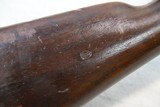




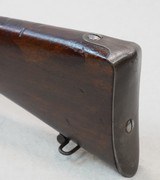


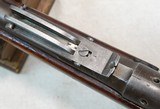





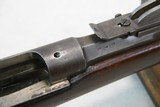
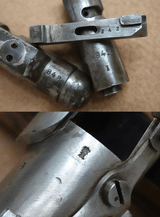
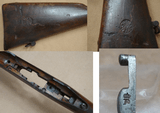


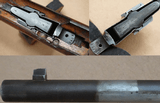
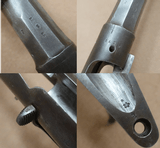
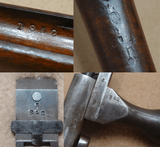
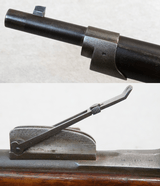
|
Guns International #: 102800944
Category - Military Rifles - Non-US
- Military Rifles - Antique
Seller's Information
When emailing or calling sellers direct,
please mention that you saw their listing on GunsInternational.com
Seller: Antique & Modern Firearms, Inc.
Company: Antique & Modern Firearms, Inc. Member Since: 4/27/15
State:
Kentucky
Zip: 40503
Country: United States
Phone:
(859) 276-1419
Fax:
(859) 278-0838
Active Listings: 0
Total Listings: 16038
Seller Type: FFL Dealer
Return Policy: 3 day inspection and return policy on used guns and accessories.
Payment Methods: Visa,Master Card, Discover,Check
1873 Dated Delft Mfg. Dutch Army Model 1871/88 Beaumont-Vitali in 11.35x51mmR Caliber
* Fully-Converted M1871/79/88 *
Description: This is a really handsome, all-original, all-matching, totally-honest and unmolested, Dutch Army Model 1871/88 or M1871/88 Beaumont-Vitali infantry rifle made by the Dutch state-owned DELFT Armory in 1873.. This ANTIQUE infantry rifle was the final modernized version of the Dutch Military's Beaumont Model 1871 rifle fielded, having been thru 2 conversions which modernized it significantly and greatly extended it's service life. While it was tecnically replaced as the MAIN service rifle by the Steyr M.95 in 1895, the M1871/88 Beaumont-Vitali soldiered-on as the main rifle of the Dutch Militias until 1907. At that point they were sent to the Dutch East Indies for service there, and they remained in service there all the way thru World War 2. That equates to an astonishing 74 years of military and militia service for a rifle that was first-designed in 1871 as a single-shot rifle, and which remained chambered for a big, heavy, and slow black-powder cartridge despite the upgrade to a repeater. This was an antiquated longarm that was used on horseback and in mass infantry charges across open ground in primitive military tactics, yet it served thru numerous conflicts and two world-wars in which the participants were fully-modernized and in which the troops were armed with modern weapons ranging from fully-automatic machine pistols with detachable magazines, various light, medium, and heavy machineguns that were both belt-fed or fit with detachable high-capacity box magazines, where the standard-issue infantry rifle was semi-auto and/or bolt-action repeating rifles, many carrying semi-auto pistols or revolvers as sidearms, and armies that were mostly mechanized and supplied with trucks, tanks, self-propelled artillery, and numerous other specialized and general-purpose vehicles, transports, and an assortment of airplanes of all sizes, all powered by combustion or radial engines. The story of the Beaumont rifle started with the adoption of the single-shot Model 1871 Beaumont bolt-action infantry rifle by the Dutch Military, which was chambered in the black-powder 11.35x51mm rimmed cartridge in 1871. They were manufactured in two different placesthe state-ownes Delft Armory, and the P. Stevens Maastricht firm. Both robust and reliable, the M1871 Beaumont served the Dutch Military in it's original configuration for 8 years, until 1879. At that point, the Beaumont went first thru it's first modernization/conversion to M1871/79 specs. The M1871/79 modifications consisted of drilling 2 gas escape holes/vents into the receiver's front barrel ring to safely disperse gases from ruptured primers away from the shooter, as well as replacing the rear sight with a much-improved design that was capable of better accuracy yet more robust and durable, easier to adjust in severe weather and in often rapidly-changing battlefield conditions, and had a much larger range of elevation adjustment, now adjustable from 100 meters all the way out to 1800 meters. This better-matched the military's standard-issue 11.35x51mmR cartridge balistics, extended it's effective range, and generally helped improved accuracy at all ranges. The second, and much more significant revision/upgrade, occurred in 1888. Despite the fact that this rifle was already considered obsolete at this point in time, when military rifles designed to use "small bore" smokeless powder cartridges were being adopted by countries all over the world, the Dutch Army's top brass decided to save money and time by converting the single-shot M1871 and M1871/79 Beaumont rifles already in inventory into a bolt-action repeater, by using 4-round box magazine conversion designed by Major Giuseppe Vitali of Italy. The rifle's black powder-powered chambering in 11.35x52mmR would remain the same, despite it being obsolete as much or more-so than the rifle, in an effort to save cost and time anywhere they possibly could, as well as to take advantge of the huge surpus of this ammo already in the Anry's inventory. This 2nd conversion began in 1888, which was already two years AFTER the appearance of the M1886 French Lebel (the first smokeless powder, small bore, cartridge infantry rifles). Thid conversion was ordered to be completed on ALL of the regular Dutch Army's rifles, except for a few in-service in the Dutch East Indies and with the Home Guard. The Dutch Navy decided not to take part, choosing to remained armed with the single-shot Beaumont models they had on-board their ships and at their bases/docks. To convert the Dutch Army's Beaumont M1871/79s into repeaters, the stock was first modified by cutting-out the wood required on the underside of the stock to fit the Vitali-designed magazine assembly. This non-removable box magazine was mounted against a cut-out made in the lower receiver to secure it. Next, the extractor was moved to the right side of the non-rotating bolt head, and the matching channels in the left side of the receiver and on the left side of the bolt head were used for clearing a newly-fit floating ejector. The ejector was designed to force the spent case to pivot against the extractor during the very last bit of bolt travel, which powers the ejection of the case out of the receiver to the right side. The left side of the stock was cut out just to the left of the receiver for a magazine cut-off lever, which was fit to the outside of the left side of the receiver, just behind the bolt opening. This magazine cut-off lever actuates a spring-loaded tang in the left receiver-wall, just below the extractor channel. Pushing this lever forward actuates that tang into pressing downward on the top cartridge, which locks the remaining cartridges in the magazine below the bolt, which can now travel thru the full range of motion totally unimpeded. This makes it possible for the soldier to load one cartridge at a time, by dropping it into the receiver with the bolt rearward, cycling the bolt forward guides that cartridge into the chamber while locking onto the rim and is ready to fire, while keeping a full magazine in-reserve for repelling massed attacks or rapid offensive actions. The M1871/88 Beaumont-Vitali did NOT have any type of safety. These modernizations/modifications were just adequate-enough to prevent the Dutch Arny from being at a huge disadvantage against enemy forces armed with bolt-action repeaters chambered in the more modern, powerful, and high-velocity smokeless cartridges. This particular M1871/88, serial number "842 I" is in very good condition overall, all-original, and all of the serial-numbered parts are matching. It is complete in every respect exceptfor the cleaning rod and sling. It was obviously issued and used by the Dutch Army, but has been well-cared for to remain in it's current good condition. While the exterior of the rilfe shows wear to the metal, handling marks in the metal and wood, and a consistent patina to the steel from exposure and light surface rust long-removed, the mechanics and internals of the rifle are in excellent condition, and the rifle is 100% functional, just like the day it left the armory after the last conversion to M1871/88 specs. The original armory bright and blue factory/armory finishes are still intact, however the armory bright bare steel has darkened from field use, exposure, and storage to a gray/brown tint. The factory blued parts including the magazine assembly and some various small parts in the bolt assembly and elsewhere has also worn to a gray/brown blue color, thru both mechanical wear from carrying and firing it, as well as deterioration from just being exposed to the air and humidity for 151 years, as well as a wide range of weather while it was still afield in military service. As you can see from the pictures provided, despite it's old age, and likely extended service-life with the Dutch military, militia, and colonial forces, this Beaumont-Vitali M1871/88 is STILL a handsome rifle. The uniformity of the patina on the metal parts combined with the matching condition of the stock is attractive, and there are no eyesores that detract from its look like replacement parts or repairs that do not match the rest of the rifle in condition or color. The action is still slick and smooth with no excessive play or slop anywhere, all of the controls work perfectly, the stock is still solid with no cracks or missing chunks of wood, all of the factory and military-applied markings and inspection proofs are still both intact and fully legible, and rifle is still nice and tight overall with no rattling, broken, or loose parts. The bore of this Beaumont-Vitali is in good condition overall, slightly-dark but with well-defined and strong rifling, showing only some minor pitting primarily in the grooves and scattered throughout the barrel. Therre is no major pitting, bulges, or major damage of any kind visible, and the barrel appears straight as an arrow. All in all, if you have been looking for a really cool antique military rifle to add to your collection, this 1873-manufactured example from the Delft Armaments Factry would be an excellent choice. As there seem to be very few all-original and matching examples out there, this rifle should be an excellent long-term investment and an excellent display-piece. SOLD Antique: Yes Rifle Caliber: 11.35X51mmR Manufacturer: Delft" Armaments Factory Model: Model 1871/88 / M1871/88 Beaumont-Vitali Serial Number: 842 I Barrel Length: 32.7" Inches Condition: Very Good Metal Condition: Good Wood Condition: Very Good Bore Condition: Good / Above Average Action: Bolt-Action Repeating Rifle Finish: Armory Bright / Blued Sights: Adjustable Iron Battle Sights Manufacture Date: 1873 |
Guns International #: 102800944
Seller's Inventory #: BP21-91
Category - Military Rifles - Non-US
- Military Rifles - Antique
Seller's Information
When emailing or calling sellers direct,
please mention that you saw their listing on GunsInternational.com
Seller: Antique & Modern Firearms, Inc.
Company: Antique & Modern Firearms, Inc.
Company: Antique & Modern Firearms, Inc.
Member Since: 4/27/15
State:
Kentucky
Zip: 40503
Country: United States
Phone:
(859) 276-1419
Fax:
(859) 278-0838
Active Listings: 0
Total Listings: 16038
Seller Type: FFL Dealer
Return Policy: 3 day inspection and return policy on used guns and accessories.
Payment Methods: Visa,Master Card, Discover,Check
1873 Dated Delft Mfg. Dutch Army Model 1871/88 Beaumont-Vitali in 11.35x51mmR Caliber
* Fully-Converted M1871/79/88 *
Description:
This is a really handsome, all-original, all-matching, totally-honest and unmolested, Dutch Army Model 1871/88 or M1871/88 Beaumont-Vitali infantry rifle made by the Dutch state-owned DELFT Armory in 1873.. This ANTIQUE infantry rifle was the final modernized version of the Dutch Military's Beaumont Model 1871 rifle fielded, having been thru 2 conversions which modernized it significantly and greatly extended it's service life. While it was tecnically replaced as the MAIN service rifle by the Steyr M.95 in 1895, the M1871/88 Beaumont-Vitali soldiered-on as the main rifle of the Dutch Militias until 1907. At that point they were sent to the Dutch East Indies for service there, and they remained in service there all the way thru World War 2. That equates to an astonishing 74 years of military and militia service for a rifle that was first-designed in 1871 as a single-shot rifle, and which remained chambered for a big, heavy, and slow black-powder cartridge despite the upgrade to a repeater. This was an antiquated longarm that was used on horseback and in mass infantry charges across open ground in primitive military tactics, yet it served thru numerous conflicts and two world-wars in which the participants were fully-modernized and in which the troops were armed with modern weapons ranging from fully-automatic machine pistols with detachable magazines, various light, medium, and heavy machineguns that were both belt-fed or fit with detachable high-capacity box magazines, where the standard-issue infantry rifle was semi-auto and/or bolt-action repeating rifles, many carrying semi-auto pistols or revolvers as sidearms, and armies that were mostly mechanized and supplied with trucks, tanks, self-propelled artillery, and numerous other specialized and general-purpose vehicles, transports, and an assortment of airplanes of all sizes, all powered by combustion or radial engines.
The story of the Beaumont rifle started with the adoption of the single-shot Model 1871 Beaumont bolt-action infantry rifle by the Dutch Military, which was chambered in the black-powder 11.35x51mm rimmed cartridge in 1871. They were manufactured in two different placesthe state-ownes Delft Armory, and the P. Stevens Maastricht firm. Both robust and reliable, the M1871 Beaumont served the Dutch Military in it's original configuration for 8 years, until 1879. At that point, the Beaumont went first thru it's first modernization/conversion to M1871/79 specs. The M1871/79 modifications consisted of drilling 2 gas escape holes/vents into the receiver's front barrel ring to safely disperse gases from ruptured primers away from the shooter, as well as replacing the rear sight with a much-improved design that was capable of better accuracy yet more robust and durable, easier to adjust in severe weather and in often rapidly-changing battlefield conditions, and had a much larger range of elevation adjustment, now adjustable from 100 meters all the way out to 1800 meters. This better-matched the military's standard-issue 11.35x51mmR cartridge balistics, extended it's effective range, and generally helped improved accuracy at all ranges. The second, and much more significant revision/upgrade, occurred in 1888. Despite the fact that this rifle was already considered obsolete at this point in time, when military rifles designed to use "small bore" smokeless powder cartridges were being adopted by countries all over the world, the Dutch Army's top brass decided to save money and time by converting the single-shot M1871 and M1871/79 Beaumont rifles already in inventory into a bolt-action repeater, by using 4-round box magazine conversion designed by Major Giuseppe Vitali of Italy. The rifle's black powder-powered chambering in 11.35x52mmR would remain the same, despite it being obsolete as much or more-so than the rifle, in an effort to save cost and time anywhere they possibly could, as well as to take advantge of the huge surpus of this ammo already in the Anry's inventory. This 2nd conversion began in 1888, which was already two years AFTER the appearance of the M1886 French Lebel (the first smokeless powder, small bore, cartridge infantry rifles). Thid conversion was ordered to be completed on ALL of the regular Dutch Army's rifles, except for a few in-service in the Dutch East Indies and with the Home Guard. The Dutch Navy decided not to take part, choosing to remained armed with the single-shot Beaumont models they had on-board their ships and at their bases/docks.
To convert the Dutch Army's Beaumont M1871/79s into repeaters, the stock was first modified by cutting-out the wood required on the underside of the stock to fit the Vitali-designed magazine assembly. This non-removable box magazine was mounted against a cut-out made in the lower receiver to secure it. Next, the extractor was moved to the right side of the non-rotating bolt head, and the matching channels in the left side of the receiver and on the left side of the bolt head were used for clearing a newly-fit floating ejector. The ejector was designed to force the spent case to pivot against the extractor during the very last bit of bolt travel, which powers the ejection of the case out of the receiver to the right side. The left side of the stock was cut out just to the left of the receiver for a magazine cut-off lever, which was fit to the outside of the left side of the receiver, just behind the bolt opening. This magazine cut-off lever actuates a spring-loaded tang in the left receiver-wall, just below the extractor channel. Pushing this lever forward actuates that tang into pressing downward on the top cartridge, which locks the remaining cartridges in the magazine below the bolt, which can now travel thru the full range of motion totally unimpeded. This makes it possible for the soldier to load one cartridge at a time, by dropping it into the receiver with the bolt rearward, cycling the bolt forward guides that cartridge into the chamber while locking onto the rim and is ready to fire, while keeping a full magazine in-reserve for repelling massed attacks or rapid offensive actions. The M1871/88 Beaumont-Vitali did NOT have any type of safety. These modernizations/modifications were just adequate-enough to prevent the Dutch Arny from being at a huge disadvantage against enemy forces armed with bolt-action repeaters chambered in the more modern, powerful, and high-velocity smokeless cartridges.
This particular M1871/88, serial number "842 I" is in very good condition overall, all-original, and all of the serial-numbered parts are matching. It is complete in every respect exceptfor the cleaning rod and sling. It was obviously issued and used by the Dutch Army, but has been well-cared for to remain in it's current good condition. While the exterior of the rilfe shows wear to the metal, handling marks in the metal and wood, and a consistent patina to the steel from exposure and light surface rust long-removed, the mechanics and internals of the rifle are in excellent condition, and the rifle is 100% functional, just like the day it left the armory after the last conversion to M1871/88 specs. The original armory bright and blue factory/armory finishes are still intact, however the armory bright bare steel has darkened from field use, exposure, and storage to a gray/brown tint. The factory blued parts including the magazine assembly and some various small parts in the bolt assembly and elsewhere has also worn to a gray/brown blue color, thru both mechanical wear from carrying and firing it, as well as deterioration from just being exposed to the air and humidity for 151 years, as well as a wide range of weather while it was still afield in military service. As you can see from the pictures provided, despite it's old age, and likely extended service-life with the Dutch military, militia, and colonial forces, this Beaumont-Vitali M1871/88 is STILL a handsome rifle. The uniformity of the patina on the metal parts combined with the matching condition of the stock is attractive, and there are no eyesores that detract from its look like replacement parts or repairs that do not match the rest of the rifle in condition or color. The action is still slick and smooth with no excessive play or slop anywhere, all of the controls work perfectly, the stock is still solid with no cracks or missing chunks of wood, all of the factory and military-applied markings and inspection proofs are still both intact and fully legible, and rifle is still nice and tight overall with no rattling, broken, or loose parts. The bore of this Beaumont-Vitali is in good condition overall, slightly-dark but with well-defined and strong rifling, showing only some minor pitting primarily in the grooves and scattered throughout the barrel. Therre is no major pitting, bulges, or major damage of any kind visible, and the barrel appears straight as an arrow.
All in all, if you have been looking for a really cool antique military rifle to add to your collection, this 1873-manufactured example from the Delft Armaments Factry would be an excellent choice. As there seem to be very few all-original and matching examples out there, this rifle should be an excellent long-term investment and an excellent display-piece.
SOLD
Antique: Yes
Rifle Caliber: 11.35X51mmR
Manufacturer: Delft" Armaments Factory
Model: Model 1871/88 / M1871/88 Beaumont-Vitali
Serial Number: 842 I
Barrel Length: 32.7" Inches
Condition: Very Good
Metal Condition: Good
Wood Condition: Very Good
Bore Condition: Good / Above Average
Action: Bolt-Action Repeating Rifle
Finish: Armory Bright / Blued
Sights: Adjustable Iron Battle Sights
Manufacture Date: 1873
Description:
This is a really handsome, all-original, all-matching, totally-honest and unmolested, Dutch Army Model 1871/88 or M1871/88 Beaumont-Vitali infantry rifle made by the Dutch state-owned DELFT Armory in 1873.. This ANTIQUE infantry rifle was the final modernized version of the Dutch Military's Beaumont Model 1871 rifle fielded, having been thru 2 conversions which modernized it significantly and greatly extended it's service life. While it was tecnically replaced as the MAIN service rifle by the Steyr M.95 in 1895, the M1871/88 Beaumont-Vitali soldiered-on as the main rifle of the Dutch Militias until 1907. At that point they were sent to the Dutch East Indies for service there, and they remained in service there all the way thru World War 2. That equates to an astonishing 74 years of military and militia service for a rifle that was first-designed in 1871 as a single-shot rifle, and which remained chambered for a big, heavy, and slow black-powder cartridge despite the upgrade to a repeater. This was an antiquated longarm that was used on horseback and in mass infantry charges across open ground in primitive military tactics, yet it served thru numerous conflicts and two world-wars in which the participants were fully-modernized and in which the troops were armed with modern weapons ranging from fully-automatic machine pistols with detachable magazines, various light, medium, and heavy machineguns that were both belt-fed or fit with detachable high-capacity box magazines, where the standard-issue infantry rifle was semi-auto and/or bolt-action repeating rifles, many carrying semi-auto pistols or revolvers as sidearms, and armies that were mostly mechanized and supplied with trucks, tanks, self-propelled artillery, and numerous other specialized and general-purpose vehicles, transports, and an assortment of airplanes of all sizes, all powered by combustion or radial engines.
The story of the Beaumont rifle started with the adoption of the single-shot Model 1871 Beaumont bolt-action infantry rifle by the Dutch Military, which was chambered in the black-powder 11.35x51mm rimmed cartridge in 1871. They were manufactured in two different placesthe state-ownes Delft Armory, and the P. Stevens Maastricht firm. Both robust and reliable, the M1871 Beaumont served the Dutch Military in it's original configuration for 8 years, until 1879. At that point, the Beaumont went first thru it's first modernization/conversion to M1871/79 specs. The M1871/79 modifications consisted of drilling 2 gas escape holes/vents into the receiver's front barrel ring to safely disperse gases from ruptured primers away from the shooter, as well as replacing the rear sight with a much-improved design that was capable of better accuracy yet more robust and durable, easier to adjust in severe weather and in often rapidly-changing battlefield conditions, and had a much larger range of elevation adjustment, now adjustable from 100 meters all the way out to 1800 meters. This better-matched the military's standard-issue 11.35x51mmR cartridge balistics, extended it's effective range, and generally helped improved accuracy at all ranges. The second, and much more significant revision/upgrade, occurred in 1888. Despite the fact that this rifle was already considered obsolete at this point in time, when military rifles designed to use "small bore" smokeless powder cartridges were being adopted by countries all over the world, the Dutch Army's top brass decided to save money and time by converting the single-shot M1871 and M1871/79 Beaumont rifles already in inventory into a bolt-action repeater, by using 4-round box magazine conversion designed by Major Giuseppe Vitali of Italy. The rifle's black powder-powered chambering in 11.35x52mmR would remain the same, despite it being obsolete as much or more-so than the rifle, in an effort to save cost and time anywhere they possibly could, as well as to take advantge of the huge surpus of this ammo already in the Anry's inventory. This 2nd conversion began in 1888, which was already two years AFTER the appearance of the M1886 French Lebel (the first smokeless powder, small bore, cartridge infantry rifles). Thid conversion was ordered to be completed on ALL of the regular Dutch Army's rifles, except for a few in-service in the Dutch East Indies and with the Home Guard. The Dutch Navy decided not to take part, choosing to remained armed with the single-shot Beaumont models they had on-board their ships and at their bases/docks.
To convert the Dutch Army's Beaumont M1871/79s into repeaters, the stock was first modified by cutting-out the wood required on the underside of the stock to fit the Vitali-designed magazine assembly. This non-removable box magazine was mounted against a cut-out made in the lower receiver to secure it. Next, the extractor was moved to the right side of the non-rotating bolt head, and the matching channels in the left side of the receiver and on the left side of the bolt head were used for clearing a newly-fit floating ejector. The ejector was designed to force the spent case to pivot against the extractor during the very last bit of bolt travel, which powers the ejection of the case out of the receiver to the right side. The left side of the stock was cut out just to the left of the receiver for a magazine cut-off lever, which was fit to the outside of the left side of the receiver, just behind the bolt opening. This magazine cut-off lever actuates a spring-loaded tang in the left receiver-wall, just below the extractor channel. Pushing this lever forward actuates that tang into pressing downward on the top cartridge, which locks the remaining cartridges in the magazine below the bolt, which can now travel thru the full range of motion totally unimpeded. This makes it possible for the soldier to load one cartridge at a time, by dropping it into the receiver with the bolt rearward, cycling the bolt forward guides that cartridge into the chamber while locking onto the rim and is ready to fire, while keeping a full magazine in-reserve for repelling massed attacks or rapid offensive actions. The M1871/88 Beaumont-Vitali did NOT have any type of safety. These modernizations/modifications were just adequate-enough to prevent the Dutch Arny from being at a huge disadvantage against enemy forces armed with bolt-action repeaters chambered in the more modern, powerful, and high-velocity smokeless cartridges.
This particular M1871/88, serial number "842 I" is in very good condition overall, all-original, and all of the serial-numbered parts are matching. It is complete in every respect exceptfor the cleaning rod and sling. It was obviously issued and used by the Dutch Army, but has been well-cared for to remain in it's current good condition. While the exterior of the rilfe shows wear to the metal, handling marks in the metal and wood, and a consistent patina to the steel from exposure and light surface rust long-removed, the mechanics and internals of the rifle are in excellent condition, and the rifle is 100% functional, just like the day it left the armory after the last conversion to M1871/88 specs. The original armory bright and blue factory/armory finishes are still intact, however the armory bright bare steel has darkened from field use, exposure, and storage to a gray/brown tint. The factory blued parts including the magazine assembly and some various small parts in the bolt assembly and elsewhere has also worn to a gray/brown blue color, thru both mechanical wear from carrying and firing it, as well as deterioration from just being exposed to the air and humidity for 151 years, as well as a wide range of weather while it was still afield in military service. As you can see from the pictures provided, despite it's old age, and likely extended service-life with the Dutch military, militia, and colonial forces, this Beaumont-Vitali M1871/88 is STILL a handsome rifle. The uniformity of the patina on the metal parts combined with the matching condition of the stock is attractive, and there are no eyesores that detract from its look like replacement parts or repairs that do not match the rest of the rifle in condition or color. The action is still slick and smooth with no excessive play or slop anywhere, all of the controls work perfectly, the stock is still solid with no cracks or missing chunks of wood, all of the factory and military-applied markings and inspection proofs are still both intact and fully legible, and rifle is still nice and tight overall with no rattling, broken, or loose parts. The bore of this Beaumont-Vitali is in good condition overall, slightly-dark but with well-defined and strong rifling, showing only some minor pitting primarily in the grooves and scattered throughout the barrel. Therre is no major pitting, bulges, or major damage of any kind visible, and the barrel appears straight as an arrow.
All in all, if you have been looking for a really cool antique military rifle to add to your collection, this 1873-manufactured example from the Delft Armaments Factry would be an excellent choice. As there seem to be very few all-original and matching examples out there, this rifle should be an excellent long-term investment and an excellent display-piece.
SOLD
Antique: Yes
Rifle Caliber: 11.35X51mmR
Manufacturer: Delft" Armaments Factory
Model: Model 1871/88 / M1871/88 Beaumont-Vitali
Serial Number: 842 I
Barrel Length: 32.7" Inches
Condition: Very Good
Metal Condition: Good
Wood Condition: Very Good
Bore Condition: Good / Above Average
Action: Bolt-Action Repeating Rifle
Finish: Armory Bright / Blued
Sights: Adjustable Iron Battle Sights
Manufacture Date: 1873
Guns International #: 102800944
Seller's Inventory #: BP21-91


Guns International #: 102800944
Seller's Inventory #: BP21-91
Category - Military Rifles - Non-US
- Military Rifles - Antique
Seller's Information
When emailing or calling sellers direct,
please mention that you saw their listing on GunsInternational.com
Seller: Antique & Modern Firearms, Inc.
Company: Antique & Modern Firearms, Inc.
Company: Antique & Modern Firearms, Inc.
Member Since: 4/27/15
State:
Kentucky
Zip: 40503
Country: United States
Phone:
(859) 276-1419
Fax:
(859) 278-0838
Active Listings: 0
Total Listings: 16038
Seller Type: FFL Dealer
Return Policy: 3 day inspection and return policy on used guns and accessories.
Payment Methods: Visa,Master Card, Discover,Check
1873 Dated Delft Mfg. Dutch Army Model 1871/88 Beaumont-Vitali in 11.35x51mmR Caliber
* Fully-Converted M1871/79/88 *
Description:
This is a really handsome, all-original, all-matching, totally-honest and unmolested, Dutch Army Model 1871/88 or M1871/88 Beaumont-Vitali infantry rifle made by the Dutch state-owned DELFT Armory in 1873.. This ANTIQUE infantry rifle was the final modernized version of the Dutch Military's Beaumont Model 1871 rifle fielded, having been thru 2 conversions which modernized it significantly and greatly extended it's service life. While it was tecnically replaced as the MAIN service rifle by the Steyr M.95 in 1895, the M1871/88 Beaumont-Vitali soldiered-on as the main rifle of the Dutch Militias until 1907. At that point they were sent to the Dutch East Indies for service there, and they remained in service there all the way thru World War 2. That equates to an astonishing 74 years of military and militia service for a rifle that was first-designed in 1871 as a single-shot rifle, and which remained chambered for a big, heavy, and slow black-powder cartridge despite the upgrade to a repeater. This was an antiquated longarm that was used on horseback and in mass infantry charges across open ground in primitive military tactics, yet it served thru numerous conflicts and two world-wars in which the participants were fully-modernized and in which the troops were armed with modern weapons ranging from fully-automatic machine pistols with detachable magazines, various light, medium, and heavy machineguns that were both belt-fed or fit with detachable high-capacity box magazines, where the standard-issue infantry rifle was semi-auto and/or bolt-action repeating rifles, many carrying semi-auto pistols or revolvers as sidearms, and armies that were mostly mechanized and supplied with trucks, tanks, self-propelled artillery, and numerous other specialized and general-purpose vehicles, transports, and an assortment of airplanes of all sizes, all powered by combustion or radial engines.
The story of the Beaumont rifle started with the adoption of the single-shot Model 1871 Beaumont bolt-action infantry rifle by the Dutch Military, which was chambered in the black-powder 11.35x51mm rimmed cartridge in 1871. They were manufactured in two different placesthe state-ownes Delft Armory, and the P. Stevens Maastricht firm. Both robust and reliable, the M1871 Beaumont served the Dutch Military in it's original configuration for 8 years, until 1879. At that point, the Beaumont went first thru it's first modernization/conversion to M1871/79 specs. The M1871/79 modifications consisted of drilling 2 gas escape holes/vents into the receiver's front barrel ring to safely disperse gases from ruptured primers away from the shooter, as well as replacing the rear sight with a much-improved design that was capable of better accuracy yet more robust and durable, easier to adjust in severe weather and in often rapidly-changing battlefield conditions, and had a much larger range of elevation adjustment, now adjustable from 100 meters all the way out to 1800 meters. This better-matched the military's standard-issue 11.35x51mmR cartridge balistics, extended it's effective range, and generally helped improved accuracy at all ranges. The second, and much more significant revision/upgrade, occurred in 1888. Despite the fact that this rifle was already considered obsolete at this point in time, when military rifles designed to use "small bore" smokeless powder cartridges were being adopted by countries all over the world, the Dutch Army's top brass decided to save money and time by converting the single-shot M1871 and M1871/79 Beaumont rifles already in inventory into a bolt-action repeater, by using 4-round box magazine conversion designed by Major Giuseppe Vitali of Italy. The rifle's black powder-powered chambering in 11.35x52mmR would remain the same, despite it being obsolete as much or more-so than the rifle, in an effort to save cost and time anywhere they possibly could, as well as to take advantge of the huge surpus of this ammo already in the Anry's inventory. This 2nd conversion began in 1888, which was already two years AFTER the appearance of the M1886 French Lebel (the first smokeless powder, small bore, cartridge infantry rifles). Thid conversion was ordered to be completed on ALL of the regular Dutch Army's rifles, except for a few in-service in the Dutch East Indies and with the Home Guard. The Dutch Navy decided not to take part, choosing to remained armed with the single-shot Beaumont models they had on-board their ships and at their bases/docks.
To convert the Dutch Army's Beaumont M1871/79s into repeaters, the stock was first modified by cutting-out the wood required on the underside of the stock to fit the Vitali-designed magazine assembly. This non-removable box magazine was mounted against a cut-out made in the lower receiver to secure it. Next, the extractor was moved to the right side of the non-rotating bolt head, and the matching channels in the left side of the receiver and on the left side of the bolt head were used for clearing a newly-fit floating ejector. The ejector was designed to force the spent case to pivot against the extractor during the very last bit of bolt travel, which powers the ejection of the case out of the receiver to the right side. The left side of the stock was cut out just to the left of the receiver for a magazine cut-off lever, which was fit to the outside of the left side of the receiver, just behind the bolt opening. This magazine cut-off lever actuates a spring-loaded tang in the left receiver-wall, just below the extractor channel. Pushing this lever forward actuates that tang into pressing downward on the top cartridge, which locks the remaining cartridges in the magazine below the bolt, which can now travel thru the full range of motion totally unimpeded. This makes it possible for the soldier to load one cartridge at a time, by dropping it into the receiver with the bolt rearward, cycling the bolt forward guides that cartridge into the chamber while locking onto the rim and is ready to fire, while keeping a full magazine in-reserve for repelling massed attacks or rapid offensive actions. The M1871/88 Beaumont-Vitali did NOT have any type of safety. These modernizations/modifications were just adequate-enough to prevent the Dutch Arny from being at a huge disadvantage against enemy forces armed with bolt-action repeaters chambered in the more modern, powerful, and high-velocity smokeless cartridges.
This particular M1871/88, serial number "842 I" is in very good condition overall, all-original, and all of the serial-numbered parts are matching. It is complete in every respect exceptfor the cleaning rod and sling. It was obviously issued and used by the Dutch Army, but has been well-cared for to remain in it's current good condition. While the exterior of the rilfe shows wear to the metal, handling marks in the metal and wood, and a consistent patina to the steel from exposure and light surface rust long-removed, the mechanics and internals of the rifle are in excellent condition, and the rifle is 100% functional, just like the day it left the armory after the last conversion to M1871/88 specs. The original armory bright and blue factory/armory finishes are still intact, however the armory bright bare steel has darkened from field use, exposure, and storage to a gray/brown tint. The factory blued parts including the magazine assembly and some various small parts in the bolt assembly and elsewhere has also worn to a gray/brown blue color, thru both mechanical wear from carrying and firing it, as well as deterioration from just being exposed to the air and humidity for 151 years, as well as a wide range of weather while it was still afield in military service. As you can see from the pictures provided, despite it's old age, and likely extended service-life with the Dutch military, militia, and colonial forces, this Beaumont-Vitali M1871/88 is STILL a handsome rifle. The uniformity of the patina on the metal parts combined with the matching condition of the stock is attractive, and there are no eyesores that detract from its look like replacement parts or repairs that do not match the rest of the rifle in condition or color. The action is still slick and smooth with no excessive play or slop anywhere, all of the controls work perfectly, the stock is still solid with no cracks or missing chunks of wood, all of the factory and military-applied markings and inspection proofs are still both intact and fully legible, and rifle is still nice and tight overall with no rattling, broken, or loose parts. The bore of this Beaumont-Vitali is in good condition overall, slightly-dark but with well-defined and strong rifling, showing only some minor pitting primarily in the grooves and scattered throughout the barrel. Therre is no major pitting, bulges, or major damage of any kind visible, and the barrel appears straight as an arrow.
All in all, if you have been looking for a really cool antique military rifle to add to your collection, this 1873-manufactured example from the Delft Armaments Factry would be an excellent choice. As there seem to be very few all-original and matching examples out there, this rifle should be an excellent long-term investment and an excellent display-piece.
SOLD
Antique: Yes
Rifle Caliber: 11.35X51mmR
Manufacturer: Delft" Armaments Factory
Model: Model 1871/88 / M1871/88 Beaumont-Vitali
Serial Number: 842 I
Barrel Length: 32.7" Inches
Condition: Very Good
Metal Condition: Good
Wood Condition: Very Good
Bore Condition: Good / Above Average
Action: Bolt-Action Repeating Rifle
Finish: Armory Bright / Blued
Sights: Adjustable Iron Battle Sights
Manufacture Date: 1873
Description:
This is a really handsome, all-original, all-matching, totally-honest and unmolested, Dutch Army Model 1871/88 or M1871/88 Beaumont-Vitali infantry rifle made by the Dutch state-owned DELFT Armory in 1873.. This ANTIQUE infantry rifle was the final modernized version of the Dutch Military's Beaumont Model 1871 rifle fielded, having been thru 2 conversions which modernized it significantly and greatly extended it's service life. While it was tecnically replaced as the MAIN service rifle by the Steyr M.95 in 1895, the M1871/88 Beaumont-Vitali soldiered-on as the main rifle of the Dutch Militias until 1907. At that point they were sent to the Dutch East Indies for service there, and they remained in service there all the way thru World War 2. That equates to an astonishing 74 years of military and militia service for a rifle that was first-designed in 1871 as a single-shot rifle, and which remained chambered for a big, heavy, and slow black-powder cartridge despite the upgrade to a repeater. This was an antiquated longarm that was used on horseback and in mass infantry charges across open ground in primitive military tactics, yet it served thru numerous conflicts and two world-wars in which the participants were fully-modernized and in which the troops were armed with modern weapons ranging from fully-automatic machine pistols with detachable magazines, various light, medium, and heavy machineguns that were both belt-fed or fit with detachable high-capacity box magazines, where the standard-issue infantry rifle was semi-auto and/or bolt-action repeating rifles, many carrying semi-auto pistols or revolvers as sidearms, and armies that were mostly mechanized and supplied with trucks, tanks, self-propelled artillery, and numerous other specialized and general-purpose vehicles, transports, and an assortment of airplanes of all sizes, all powered by combustion or radial engines.
The story of the Beaumont rifle started with the adoption of the single-shot Model 1871 Beaumont bolt-action infantry rifle by the Dutch Military, which was chambered in the black-powder 11.35x51mm rimmed cartridge in 1871. They were manufactured in two different placesthe state-ownes Delft Armory, and the P. Stevens Maastricht firm. Both robust and reliable, the M1871 Beaumont served the Dutch Military in it's original configuration for 8 years, until 1879. At that point, the Beaumont went first thru it's first modernization/conversion to M1871/79 specs. The M1871/79 modifications consisted of drilling 2 gas escape holes/vents into the receiver's front barrel ring to safely disperse gases from ruptured primers away from the shooter, as well as replacing the rear sight with a much-improved design that was capable of better accuracy yet more robust and durable, easier to adjust in severe weather and in often rapidly-changing battlefield conditions, and had a much larger range of elevation adjustment, now adjustable from 100 meters all the way out to 1800 meters. This better-matched the military's standard-issue 11.35x51mmR cartridge balistics, extended it's effective range, and generally helped improved accuracy at all ranges. The second, and much more significant revision/upgrade, occurred in 1888. Despite the fact that this rifle was already considered obsolete at this point in time, when military rifles designed to use "small bore" smokeless powder cartridges were being adopted by countries all over the world, the Dutch Army's top brass decided to save money and time by converting the single-shot M1871 and M1871/79 Beaumont rifles already in inventory into a bolt-action repeater, by using 4-round box magazine conversion designed by Major Giuseppe Vitali of Italy. The rifle's black powder-powered chambering in 11.35x52mmR would remain the same, despite it being obsolete as much or more-so than the rifle, in an effort to save cost and time anywhere they possibly could, as well as to take advantge of the huge surpus of this ammo already in the Anry's inventory. This 2nd conversion began in 1888, which was already two years AFTER the appearance of the M1886 French Lebel (the first smokeless powder, small bore, cartridge infantry rifles). Thid conversion was ordered to be completed on ALL of the regular Dutch Army's rifles, except for a few in-service in the Dutch East Indies and with the Home Guard. The Dutch Navy decided not to take part, choosing to remained armed with the single-shot Beaumont models they had on-board their ships and at their bases/docks.
To convert the Dutch Army's Beaumont M1871/79s into repeaters, the stock was first modified by cutting-out the wood required on the underside of the stock to fit the Vitali-designed magazine assembly. This non-removable box magazine was mounted against a cut-out made in the lower receiver to secure it. Next, the extractor was moved to the right side of the non-rotating bolt head, and the matching channels in the left side of the receiver and on the left side of the bolt head were used for clearing a newly-fit floating ejector. The ejector was designed to force the spent case to pivot against the extractor during the very last bit of bolt travel, which powers the ejection of the case out of the receiver to the right side. The left side of the stock was cut out just to the left of the receiver for a magazine cut-off lever, which was fit to the outside of the left side of the receiver, just behind the bolt opening. This magazine cut-off lever actuates a spring-loaded tang in the left receiver-wall, just below the extractor channel. Pushing this lever forward actuates that tang into pressing downward on the top cartridge, which locks the remaining cartridges in the magazine below the bolt, which can now travel thru the full range of motion totally unimpeded. This makes it possible for the soldier to load one cartridge at a time, by dropping it into the receiver with the bolt rearward, cycling the bolt forward guides that cartridge into the chamber while locking onto the rim and is ready to fire, while keeping a full magazine in-reserve for repelling massed attacks or rapid offensive actions. The M1871/88 Beaumont-Vitali did NOT have any type of safety. These modernizations/modifications were just adequate-enough to prevent the Dutch Arny from being at a huge disadvantage against enemy forces armed with bolt-action repeaters chambered in the more modern, powerful, and high-velocity smokeless cartridges.
This particular M1871/88, serial number "842 I" is in very good condition overall, all-original, and all of the serial-numbered parts are matching. It is complete in every respect exceptfor the cleaning rod and sling. It was obviously issued and used by the Dutch Army, but has been well-cared for to remain in it's current good condition. While the exterior of the rilfe shows wear to the metal, handling marks in the metal and wood, and a consistent patina to the steel from exposure and light surface rust long-removed, the mechanics and internals of the rifle are in excellent condition, and the rifle is 100% functional, just like the day it left the armory after the last conversion to M1871/88 specs. The original armory bright and blue factory/armory finishes are still intact, however the armory bright bare steel has darkened from field use, exposure, and storage to a gray/brown tint. The factory blued parts including the magazine assembly and some various small parts in the bolt assembly and elsewhere has also worn to a gray/brown blue color, thru both mechanical wear from carrying and firing it, as well as deterioration from just being exposed to the air and humidity for 151 years, as well as a wide range of weather while it was still afield in military service. As you can see from the pictures provided, despite it's old age, and likely extended service-life with the Dutch military, militia, and colonial forces, this Beaumont-Vitali M1871/88 is STILL a handsome rifle. The uniformity of the patina on the metal parts combined with the matching condition of the stock is attractive, and there are no eyesores that detract from its look like replacement parts or repairs that do not match the rest of the rifle in condition or color. The action is still slick and smooth with no excessive play or slop anywhere, all of the controls work perfectly, the stock is still solid with no cracks or missing chunks of wood, all of the factory and military-applied markings and inspection proofs are still both intact and fully legible, and rifle is still nice and tight overall with no rattling, broken, or loose parts. The bore of this Beaumont-Vitali is in good condition overall, slightly-dark but with well-defined and strong rifling, showing only some minor pitting primarily in the grooves and scattered throughout the barrel. Therre is no major pitting, bulges, or major damage of any kind visible, and the barrel appears straight as an arrow.
All in all, if you have been looking for a really cool antique military rifle to add to your collection, this 1873-manufactured example from the Delft Armaments Factry would be an excellent choice. As there seem to be very few all-original and matching examples out there, this rifle should be an excellent long-term investment and an excellent display-piece.
SOLD
Antique: Yes
Rifle Caliber: 11.35X51mmR
Manufacturer: Delft" Armaments Factory
Model: Model 1871/88 / M1871/88 Beaumont-Vitali
Serial Number: 842 I
Barrel Length: 32.7" Inches
Condition: Very Good
Metal Condition: Good
Wood Condition: Very Good
Bore Condition: Good / Above Average
Action: Bolt-Action Repeating Rifle
Finish: Armory Bright / Blued
Sights: Adjustable Iron Battle Sights
Manufacture Date: 1873
Guns International Advertising Policy
GunsInternational.com is the #1 Gun Classified website that brings gun buyers and gun brokers or sellers together through classified advertising of guns, gun related items and services for sale online. If you are looking to buy guns online or sell guns online, you have come to the right place. GunsInternational.com gun classifieds currently have over 200,000 guns for sale online by numerous dealers and collectors alike. Guns International makes no representation or warranty as to the accuracy of the information contained in the gun classifieds, gun parts or gun services classifieds listings. Buyers and sellers are required to know and comply with all applicable local, state, federal and international firearm laws.
GunsInternational.com is the #1 Gun Classified website that brings gun buyers and gun brokers or sellers together through classified advertising of guns, gun related items and services for sale online. If you are looking to buy guns online or sell guns online, you have come to the right place. GunsInternational.com gun classifieds currently have over 200,000 guns for sale online by numerous dealers and collectors alike. Guns International makes no representation or warranty as to the accuracy of the information contained in the gun classifieds, gun parts or gun services classifieds listings. Buyers and sellers are required to know and comply with all applicable local, state, federal and international firearm laws.
Listings
Home
New Today
New This Week
Rifles For Sale Online
Shotguns For Sale Online
Handguns For Sale Online
Pistols For Sale Online
Revolvers For Sale Online
NFA
Gun Parts For Sale Online
Services
Home
New Today
New This Week
Rifles For Sale Online
Shotguns For Sale Online
Handguns For Sale Online
Pistols For Sale Online
Revolvers For Sale Online
NFA
Gun Parts For Sale Online
Services
©2006 - 2025 all rights reserved. | Guns International.com | V4.1 ww2



Privacy Policy
User Agreement
FAQs
Contact Us
©2006 - 2025 all rights reserved.
Guns International.com | V4.1 ww2
Guns International.com | V4.1 ww2

